When many people think of Hawaii, they picture golden beaches, palm-trees, tropical surf and sun-drenched rainforests. But perched high above the tropical zone are some of the most surprising sights in the islands: snow-capped volcanoes. On Hawaii’s tallest peaks, the combination of elevation, cold air and storms can turn what seems like a perpetual summer paradise into a snow-covered landscape. In this post I’ll explore the volcanoes in Hawaii that actually get snow, how and when it happens, and what it means for visitors and the environment.
Towering 13,803 feet above sea level, Mauna Kea is not only the tallest volcano in Hawaiʻi — it’s the tallest mountain in the Pacific. Its name literally means “white mountain” in Hawaiian, a nod to the snow that graces its summit several times each winter.
Snow on Mauna Kea usually appears between December and February, when cold air from passing winter storms meets the moist atmosphere over the Big Island. At this elevation, temperatures regularly drop below freezing, turning rain into snow and transforming the volcanic slopes into a dazzling winter landscape.
When conditions are right, the contrast is stunning — a white-capped mountain rising above the palm trees and lava fields below. Even though the snow might only last a few days before melting, it’s a breathtaking reminder of the island’s extreme elevation changes.
The Mauna Kea Access Road often closes during heavy snowfall due to icy conditions, so anyone hoping to visit should always check local updates before attempting the drive. And if you make it to the top, dress warmly — temperatures can easily dip below freezing, even while it’s 80°F on the beaches below.
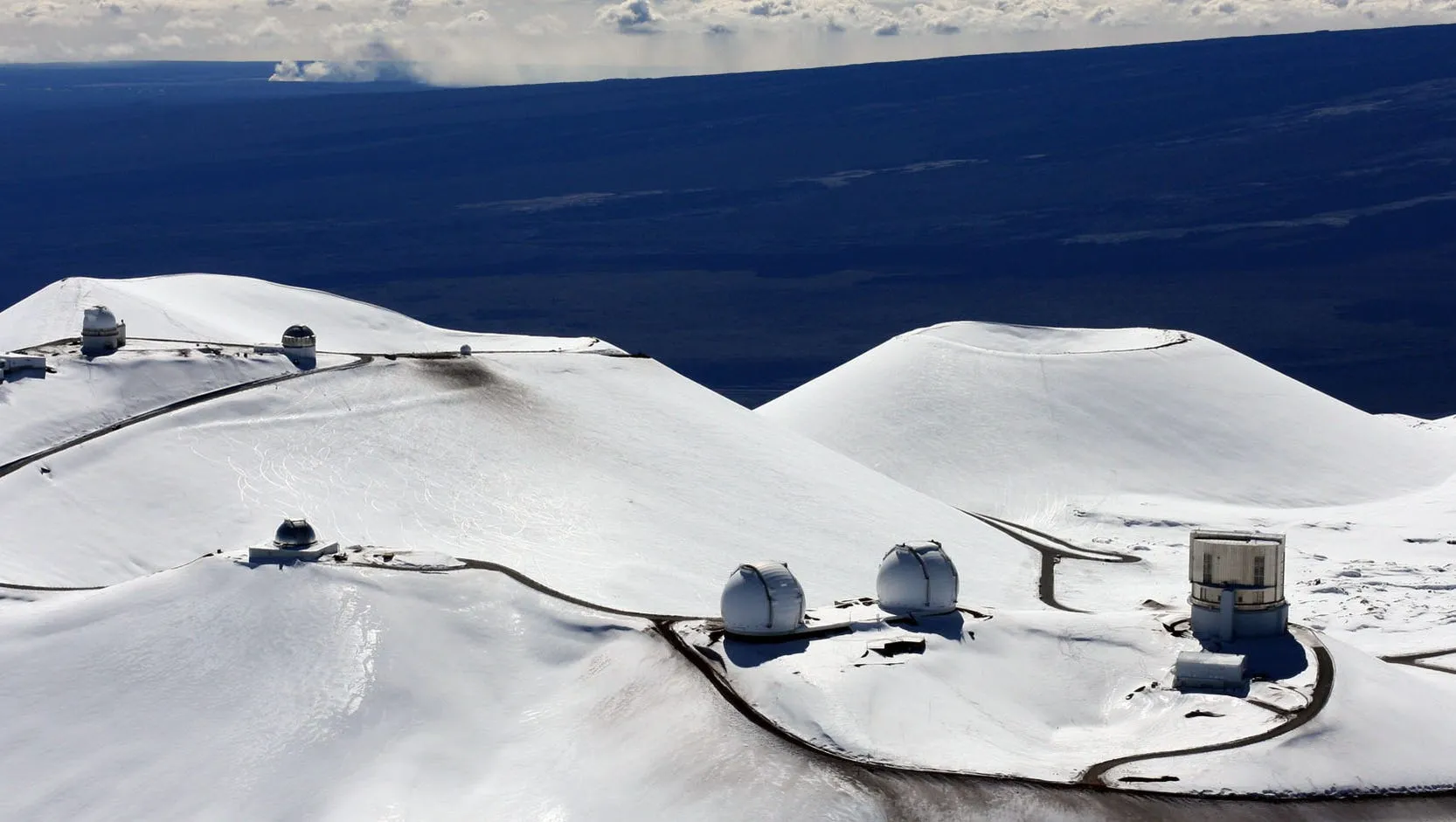
Just south of Mauna Kea sits Mauna Loa, the largest volcano on Earth by volume. Standing at 13,679 feet, its massive shield shape dominates more than half of the Big Island. Like its neighbor, Mauna Loa also receives occasional snowfall, particularly during strong winter storms that sweep across the Pacific.
The snow usually blankets the upper slopes for a short time, creating a surreal view of white streaks running across the dark volcanic rock. It doesn’t last long — the sun at this elevation is intense — but for a day or two, Hawaiʻi’s largest volcano looks like a snow-covered mountain straight out of a postcard.
Mauna Loa’s immense size and gradual slopes make it less accessible to casual visitors than Mauna Kea, but those who catch a glimpse of it under snow often describe it as one of the most awe-inspiring sights in the islands. Seeing snow on an active volcano that erupted as recently as 2022 feels like watching fire and ice coexist in perfect harmony.
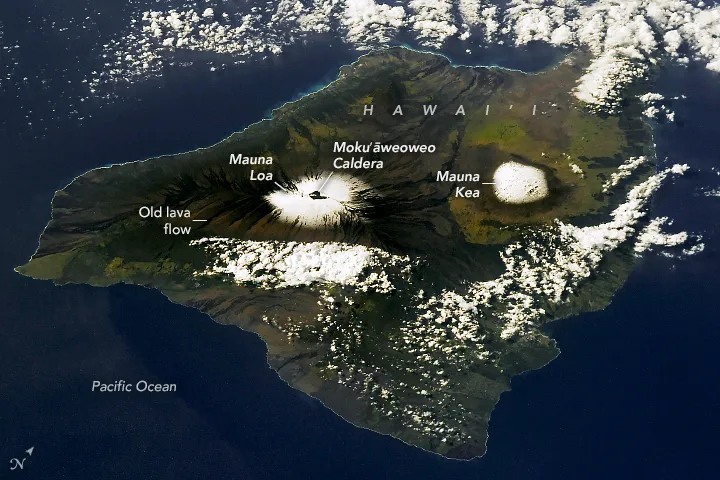
On Maui, the massive Haleakalā volcano rises more than 10,000 feet into the sky and forms much of the island’s eastern half. While it’s best known for its breathtaking sunrises / sunsets, dreamy stargazing and vast crater views, Haleakalā occasionally receives its own dusting of snow.
Snowfall here is much rarer and usually lighter than on the Big Island’s peaks, but when it happens, the scene is unforgettable — a white cap crowning the island’s tallest summit, visible all the way from the beaches of Kihei or Wailea.
When a cold winter storm passes through the islands, freezing temperatures can drop low enough to create a thin layer of snow or ice near the summit. On rare occasions, even lower elevations on Maui, such as Polipoli State Park, have experienced snow — a remarkable event considering Hawaiʻi’s tropical latitude.
If you’re visiting Maui in winter, keep your eyes on the summit of Haleakalā after a big storm. You might just spot one of nature’s most unexpected Hawaiian wonders.
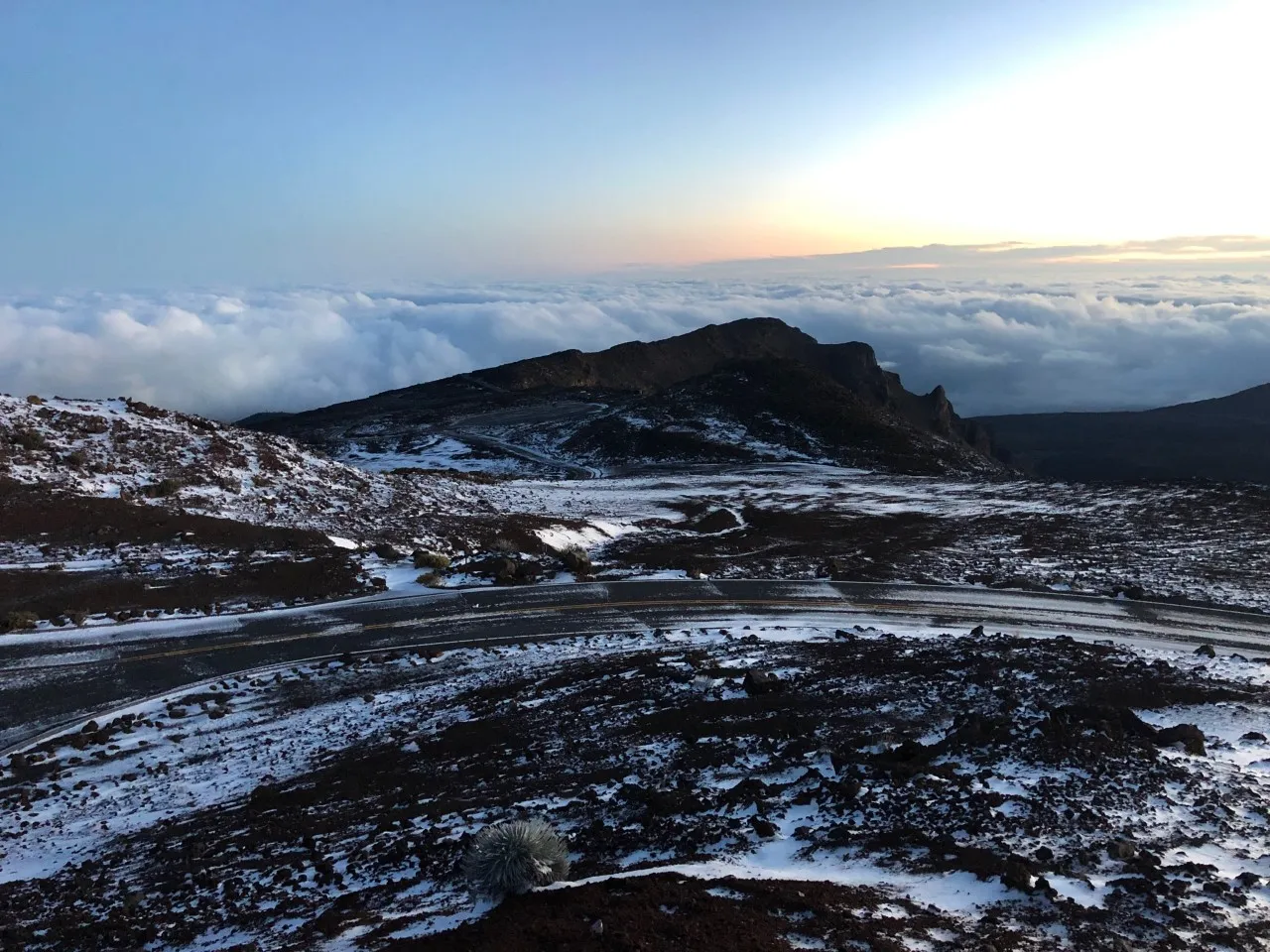
It all comes down to altitude and atmosphere. Hawaiʻi’s tallest volcanoes rise well above 10,000 feet, reaching the cold, thin air of the upper troposphere. Even though the islands sit near the equator, the temperature at those heights can easily fall below freezing.
When moist air from Pacific storms climbs up the slopes of these volcanoes, it cools rapidly — and under the right conditions, the moisture turns into snow rather than rain. This process is most common in winter, when Kona storms bring cooler air and heavy precipitation to the islands.
As a result, Hawaiʻi can have both tropical beaches and snow-capped peaks — sometimes on the same day.
Don’t base your entire trip on snow there unless you’re flexible.
Snowfall on Hawaiʻi’s volcanoes is one of those delightful paradoxes that reminds us just how varied Earth’s climates can be. The same islands that host surfers and sun-seekers also host peaks that look like they belong in the Rockies or Alps—blanketed in white after high-altitude storms. Whether you go to Mauna Kea or Mauna Loa on the Big Island, or you’re visiting Maui and glance up at Haleakalā on a crisp morning, seeing snow in Hawaiʻi is a memorable experience.
It underscores how elevation and geography can override the usual “tropical island” expectation. For both adventurers and those seeking nature’s surprises, these volcano summits provide a rare glimpse into a colder world, right next to palm-fringed beaches.
How rare is snow in Hawaii? (Newsweek) – https://www.newsweek.com/how-rare-hawaii-snow-records-1976758 (Newsweek)
1. Does it really snow in Hawaii, or is that just a myth?
Yes — it really snows in Hawaii! Even though most visitors imagine warm beaches and palm trees, Hawaii’s tallest volcanoes rise above 10,000–13,000 feet, high into the freezing upper atmosphere. When winter storms pass over the islands, rain can turn into snow at these elevations, creating incredible snow-capped peaks above the tropical landscape.
2. Which volcanoes in Hawaii get snow the most?
The two volcanoes that regularly get snow are Mauna Kea (13,803 ft) and Mauna Loa (13,679 ft) on the Big Island. These massive mountains reach cold, thin air where winter storms can blanket their upper slopes in white several times each year. Snow typically appears between December and February, but it can occur anytime during winter storm season.
3. Why does Mauna Kea get so much snow compared to other Hawaiian mountains?
Mauna Kea is the tallest mountain in the Pacific and rises nearly 14,000 feet above sea level. At that height, temperatures regularly fall below freezing, especially during passing winter storms. When moist air cools rapidly over the summit, it transforms into snow. This is why the mountain’s name in Hawaiian — Mauna Kea, or “white mountain” — reflects its snowy summit.
4. Does Mauna Loa also get snow like Mauna Kea?
Yes, although Mauna Loa gets snow less frequently. It’s still extremely tall and can receive snow during powerful winter storms. The snow usually blankets its upper slopes for a short time, creating white streaks across the dark volcanic rock. Because the mountain is so massive and broad, the snow melts quickly under the intense sun — but when it happens, it’s an unforgettable sight.
5. Can Haleakalā on Maui get snow too?
Yes — but only rarely. At 10,023 feet, Haleakalā on Maui is tall enough for occasional dustings of snow or ice during cold winter storms. These events are uncommon but spectacular, especially when a thin layer of white caps the summit and can be seen from Kihei, Wailea, or even central Maui. Sometimes even lower elevations like Polipoli State Park have seen snow, which is extremely rare in the tropics.
6. Why does snow fall in a tropical place like Hawaii?
It’s all about elevation and atmospheric conditions. Hawaii’s tallest volcanoes reach high into cold upper air, where temperatures can sink below freezing even though the islands sit near the equator. When Pacific moisture rises up their slopes and cools rapidly, it turns into snow instead of rain. Winter storms — especially Kona storms — bring the freezing air needed for snowfall.
7. When is the best time of year to see snow on Hawaii’s volcanoes?
Your best chance is during late fall through early spring, especially December to February when winter storms are most active. Snow doesn’t happen every week, but when storms line up correctly, both Mauna Kea and Mauna Loa can become snow-capped for a few days.
8. Is it safe to drive to the summit of Mauna Kea during snowfall?
It depends on the conditions. The Mauna Kea Access Road often closes during or after snow due to ice, strong winds, or limited visibility. Always check official road updates before driving. Even when the road is open, prepare for freezing temperatures, strong winds, and rapidly changing weather — very different from the beaches below.
9. What should I wear if I’m visiting a snowy volcano in Hawaii?
Visitors should dress for full winter conditions. At 13,000+ feet, it can be below freezing, extremely windy, and icy. Bring:
Even if it’s 80°F at sea level, it can feel like the Rockies or the Alps at the summit.
10. Is it worth visiting Mauna Kea or Mauna Loa just to see snow?
Absolutely — but with realistic expectations. Snow doesn’t happen daily, and it may melt quickly. However, when it does appear, the contrast of snow on volcanic slopes above palm trees and beaches is one of the most unique sights in the world. Visitors often describe it as surreal and unforgettable.
11. How rare is it to see snow on Haleakalā compared to the Big Island summits?
Snow on Haleakalā is much rarer than on Mauna Kea or Mauna Loa. Even when it does snow, it’s typically a very thin layer that melts quickly. Your chances improve after strong winter storms, but it’s not guaranteed — so it’s best to treat any Haleakalā snowfall as a lucky bonus rather than a planned event.
12. Are there any cultural or environmental rules to follow when visiting snowy summits?
Yes. Especially on Mauna Kea, the summit holds deep cultural significance for Native Hawaiians and is also home to fragile ecosystems. Always respect restricted areas, stay on designated paths, avoid disturbing observatory zones, and follow all posted guidelines. Snow or no snow, the summit is a sacred place deserving of respect.
13. Are the photo opportunities really that special when it snows in Hawaii?
Without a doubt. Few places on Earth offer such dramatic contrasts: snow-capped volcanoes rising above tropical coastlines, palm trees, and volcanic plains. Photographers cherish these rare moments, especially right after a storm when snow is fresh and sunlight hits the peaks.
14. Should I plan my Hawaii vacation around seeing snow on volcanoes?
Not necessarily. Snowfall is unpredictable and weather-dependent. If you’re flexible and visiting in winter, you might get lucky — especially on the Big Island. But it’s better to treat snow as a surprise bonus rather than the main goal of your trip. Hawaii has far more reliable experiences to plan around, like beaches, hiking, stargazing, and culture.
If you would like to read and learn more about interesting things in Hawaii! Check out our blog page here on our website!
or
Maui doesn’t have a standalone waterpark, but several top resorts have seriously fun pool complexes with slides that range from toddler-friendly to “send it!” And if you want an adventurous twist off the resort strip, there’s a unique jungle waterslide experience upcountry that visitors rave about.
If you’re seeking an adventure-packed day on Maui, combining a zipline tour with a waterslide is about as good as it gets. At NorthShore Zipline in Ha‘ikū (upcountry, on Maui’s lush North Shore), we’ve added a waterslide to complement our signature zipline experience, creating a complete package of adrenaline and refreshing fun.
Book your unforgettable NorthShore Zipline Adventure today and experience Maui’s most exciting zipline — complete with our new waterslide!
👉 Book Now at NorthShore Zipline
Here’s what you can expect:
When people talk about the best waterslides on Maui, Grand Wailea is the name that comes up first. The Wailea Canyon Activity Pool is essentially a mini waterpark woven through tropical landscaping—multiple interconnected pools, a lazy-river vibe in spots, and several slides for different comfort levels. Little ones can splash in shallower areas while teens (and fun-loving adults) chase the bigger, faster chutes. Expect crowd energy and an all-day scene; cabanas book out early. If a full resort-day anchored by slides is your goal, this is your top pick on the south side.
Best for: Families who want a destination pool day with variety and scale.
Good to know: Bring reef-safe sunscreen and plan shade breaks; Wailea skies are wonderfully sunny most of the year.
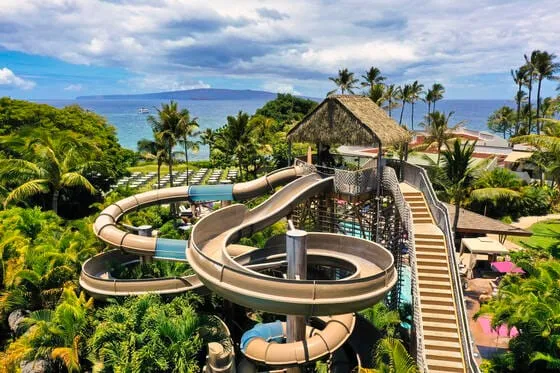
On the west side, the Westin’s multi-pool complex wraps around lush gardens with waterfalls and slide features that feel adventurous but approachable. It’s less sprawling than Grand Wailea but still delivers a legitimate “wow, we’re in Hawaiʻi” pool day. The slide here runs fast enough to delight bigger kids while remaining friendly for first-timers.
Best for: Families who want the slide fun and quick beach access—Kā‘anapali Beach is steps away.
Pro tip: Time your pool session around sunset; few places beat Kā‘anapali’s golden hour.
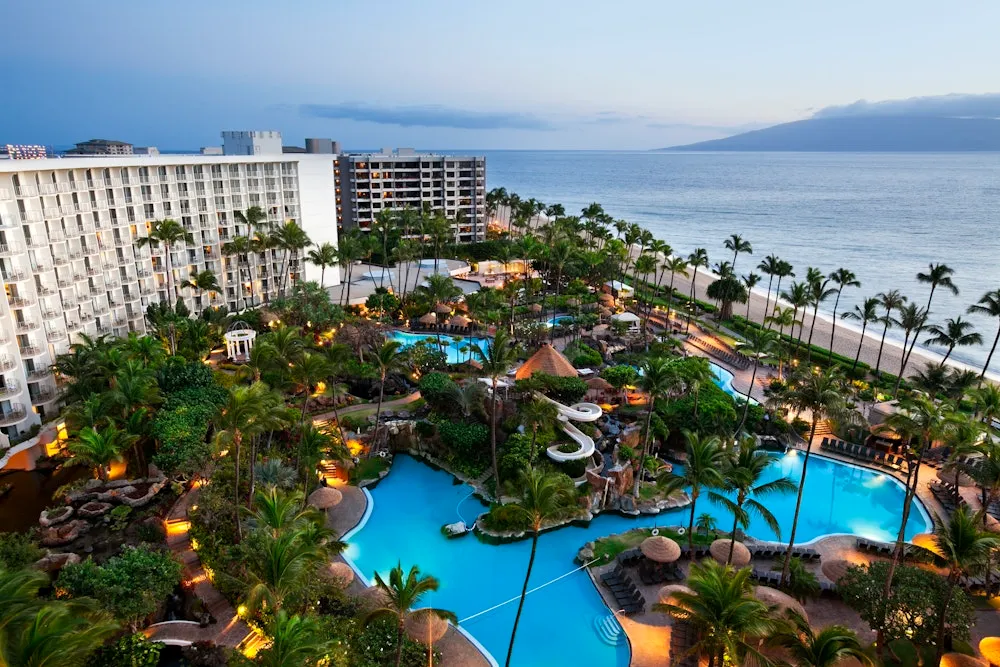
Hyatt’s lagoon-style pools and rockwork create natural lines for swooping down a classic lava-tube-style slide. It’s a crowd-pleaser—smooth, quick, and photogenic—with convenient food-and-drink options close by. If you’re balancing pool time with penguin feedings (yes, really) and beachfront walks, this property makes it easy.
Best for: Slide lovers who want a polished resort day without leaving the Kā‘anapali strip.
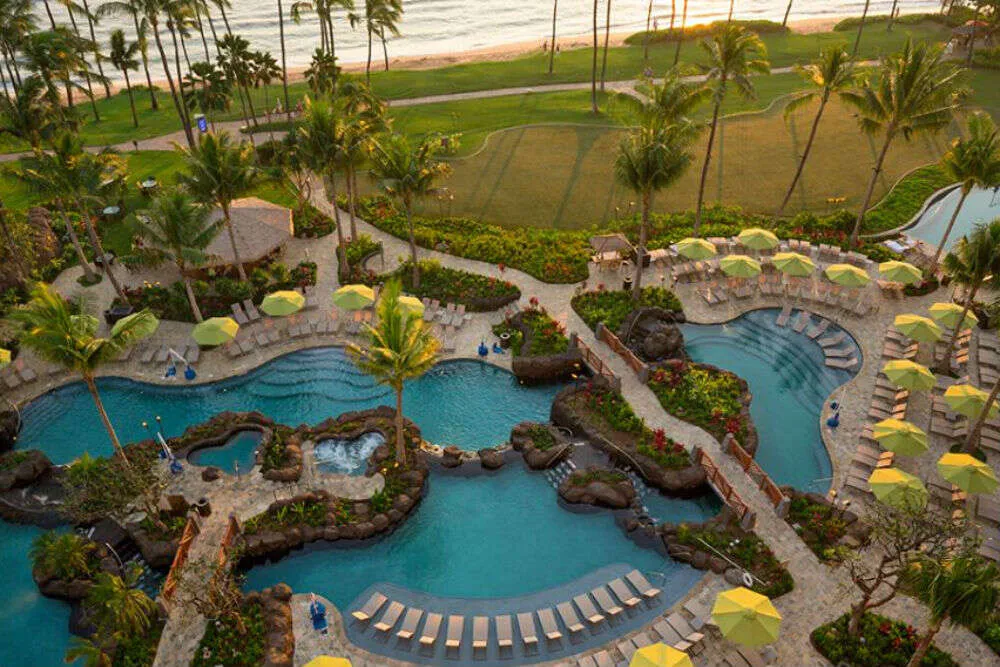
Set at the famous Puʻu Keka‘a (Black Rock), Sheraton’s lagoon pool and shorter slide are ideal for younger kids and relaxed riders. The headline here is the location: you can alternate pool laps and ocean dips, then grab a spot to watch the iconic cliff-dive ceremony at sunset.
Best for: Families with mixed ages and anyone who values direct beach access as much as slide time.
A favorite for multi-generational trips, the Ocean Club’s slide features are fun without being intimidating, and the pool deck is built for hang-time: plenty of loungers, lawns for toddlers to toddle, and easy access to snacks. You’ll find mellow lines and happy kids.
Best for: Younger families and groups who want laid-back slide sessions throughout the day.
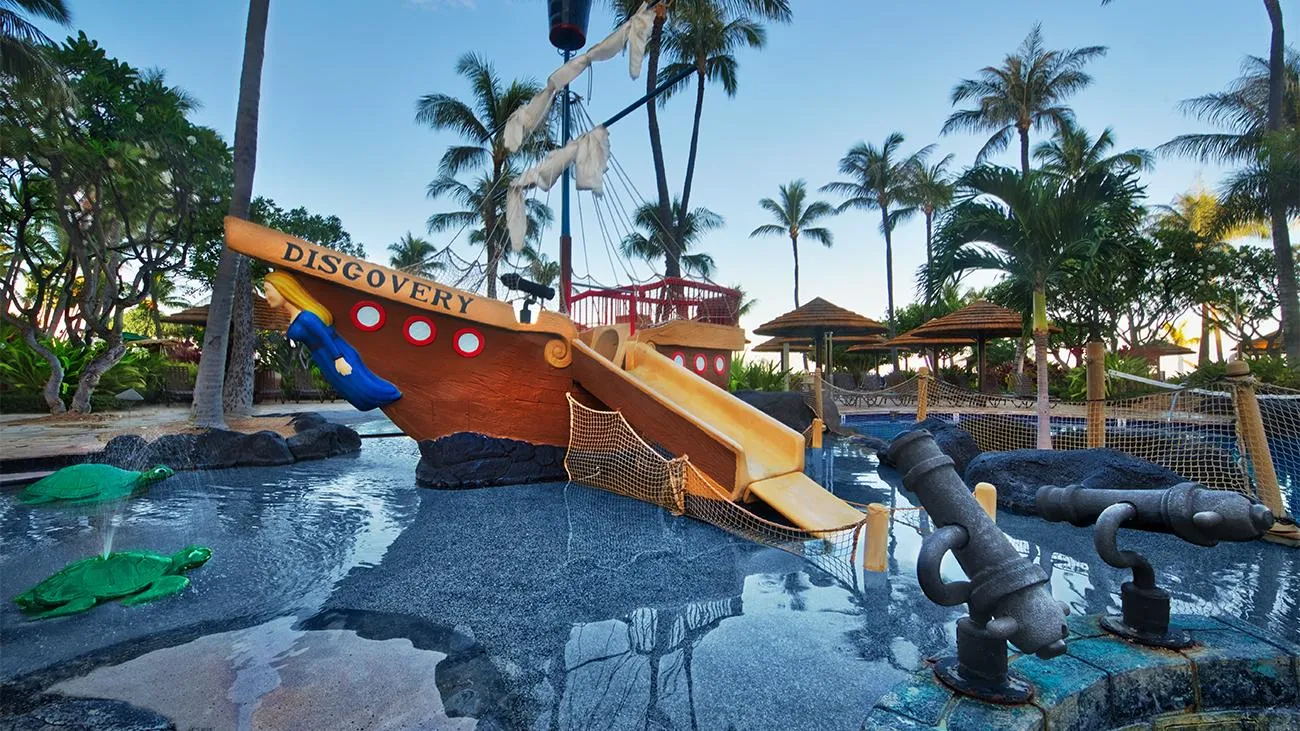
Fairmont’s bright, airy vibe extends to its pool deck, where a curving slide tucks into palm-framed rockwork. It’s not the island’s biggest, but it’s stylish, smooth, and repeat-worthy—especially for school-age riders who’ll happily loop it between shave ice runs and the beach path.
Best for: Style-seekers and families who want Wailea polish with an easygoing slide.
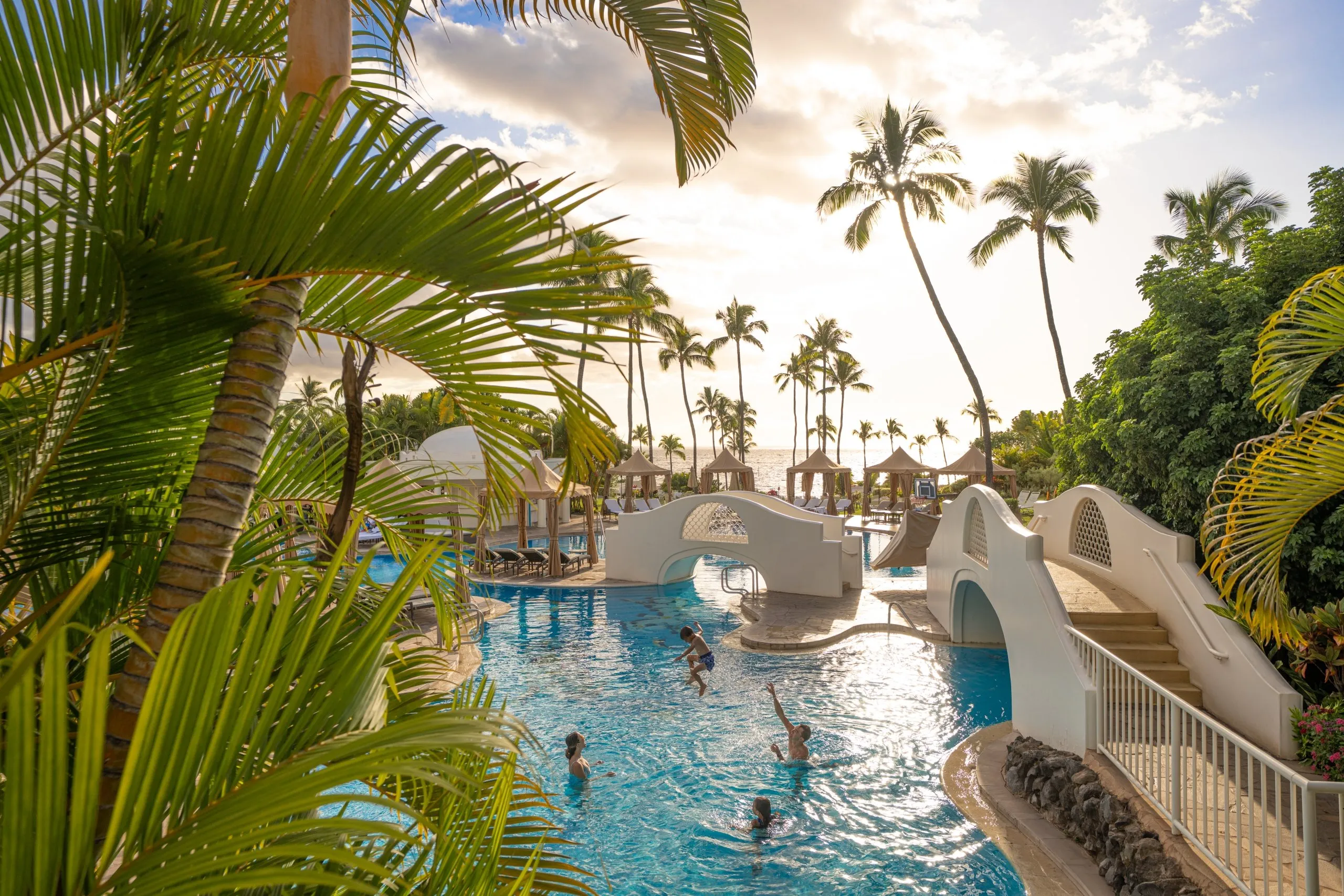
1) Age & comfort level. If you’ve got daredevils and cautious swimmers in the same crew, Grand Wailea’s range is tough to beat. For universally friendly slides, Hyatt, Westin, and Marriott Ocean Club are great.
2) Beach vs. pool priorities. If your plan is “slide in the morning, ocean by lunchtime,” Kā‘anapali properties (Hyatt, Westin, Sheraton, Marriott) make transitions effortless. Wailea’s beaches are gorgeous too—just expect a full-featured resort day at Grand Wailea or Fairmont.
3) Crowd tolerance. Big complexes draw big energy. For a more intimate splash with a side of adventure, consider the Haʻikū jungle waterslide experience paired with ziplining—memorable and less hectic.
4) Weather & logistics. South Maui (Wailea) is often sunnier and a touch drier, while West Maui (Kā‘anapali/Kaʻanapali) wins for long beach strolls, shopping, and sunset dining close to your pool day.
1. Does Maui have a waterpark, or where can I find waterslides on the island?
Maui doesn’t have a full-scale standalone waterpark, but several top resorts offer impressive pool complexes with waterslides ranging from toddler-friendly to thrilling. You’ll find some of the best slides at Grand Wailea, Westin Maui, Hyatt Regency Maui, Marriott’s Maui Ocean Club, Sheraton Maui, and Fairmont Kea Lani. For a more adventurous, non-resort option, NorthShore Zipline in Haʻikū offers Maui’s only jungle-style waterslide—paired with a world-class zipline tour.
2. Where can I try the waterslide at NorthShore Zipline?
The NorthShore Zipline waterslide is located in Haʻikū on Maui’s lush North Shore, inside a beautiful upcountry rainforest setting. After you complete seven thrilling ziplines, cross suspension bridges, and soar above the tree canopy, the waterslide offers the perfect cool-down finale. It’s a unique adventure combo you won’t find at any resort.
👉 Book your NorthShore Zipline experience anytime for a full day of zip + slide fun.
3. Is the NorthShore Zipline waterslide family-friendly?
Yes! The NorthShore waterslide was designed to complement their already family-friendly zipline course. Kids as young as five years old (minimum 40 lbs) can participate. That means if they’re old enough to zip, they’re old enough to slide. It’s an awesome all-ages activity, especially for families looking for something beyond the typical resort experience.
4. What makes the waterslide at NorthShore Zipline different from resort slides?
Resort slides are fun, but the NorthShore Zipline waterslide offers a totally different vibe. Instead of sitting poolside, you’re sliding through a real jungle setting on historic land that once served as Camp Maui, a WWII base. Between the museum exhibits, adrenaline-filled ziplines, and refreshing waterslide drop, it’s truly an “experience within an experience” — adventurous, cultural, and unforgettable.
5. Which Maui resort has the biggest or best waterslides?
If you’re looking for the most extensive water playground on Maui, the Grand Wailea ranks #1. Its massive Wailea Canyon Activity Pool is basically a mini waterpark: multiple pools, water features, lazy-river energy, and several slides for all ages. It’s ideal for an all-day pool adventure with lots of variety and activity.
6. What’s the best Maui resort for both slides and beach access?
For the perfect slide + beach combo, head to Kā‘anapali. Resorts like the Westin Maui, Hyatt Regency Maui, Sheraton Maui, and Marriott Ocean Club all offer great waterslides just steps from one of Maui’s most beautiful beaches. These properties let you switch seamlessly between pool fun and ocean time.
7. What Maui resort slide is best for young kids or cautious riders?
The Sheraton Maui at Black Rock and Marriott’s Maui Ocean Club offer some of the best mellow, kid-friendly slides on the island. These are perfect for younger families who want easygoing thrills without overwhelming speed or steep drops. Their pools also include toddler-friendly splash zones and plenty of loungers for parents.
8. What Maui resort slide is best for bigger kids and thrill seekers?
For riders who want something faster without being extreme, the best choices are:
For the ultimate adrenaline-plus-slide day, though, NorthShore Zipline is the top pick.
9. How do I choose the best Maui waterslide experience for my family?
Consider these four factors:
10. Is the NorthShore Zipline waterslide an all-day activity or part of the tour?
The waterslide is an add-on experience included as part of the NorthShore Zipline adventure. After completing your zip tour, riders transition smoothly into the waterslide finale. Plan to stay for the duration of your zipline experience—typically a few hours—with the waterslide serving as your last, refreshing highlight.
11. What safety tips should I know for Maui waterslides and pool complexes?
For a fun and safe waterslide day, keep these in mind:
If you would like to read and learn more about interesting things in Hawaii! Check out our blog page here on our website!
or
When planning your Hawaiian getaway, one of the most important questions travelers ask is: “Where to stay in Maui?” The Valley Isle offers something for every type of traveler—luxury resorts, charming boutique hotels, oceanside condos, and hidden jungle retreats. Each part of Maui has its own unique charm, and where you stay can define your experience. Whether you’re chasing golden beaches, lush rainforests, or local culture, here’s a complete guide to help you decide where to stay in Maui.
Best for: First-time visitors, honeymooners, and beach lovers.
If you’re picturing classic Hawaiian beauty—golden sand beaches, swaying palms, and luxury oceanfront resorts—West Maui is where you’ll find it. The region includes Lahaina, Kāʻanapali, and Kapalua, each with its own appeal.
Kāʻanapali Beach is one of Maui’s most famous stretches of sand, lined with upscale resorts like the Hyatt Regency Maui Resort and Spa, Sheraton Maui, and Westin Maui Resort & Spa. It’s a perfect place for those who want a full resort experience, with restaurants, shops, and activities all within walking distance.
A few miles north lies Kapalua, a more secluded and refined area known for world-class golf courses, hiking trails like the Kapalua Coastal Trail, and the Ritz-Carlton, Kapalua, which offers five-star service and ocean-view luxury.
For travelers who prefer a local, artistic vibe, Lahaina Town offers charming inns and vacation rentals within walking distance of shops, art galleries, and oceanfront dining.
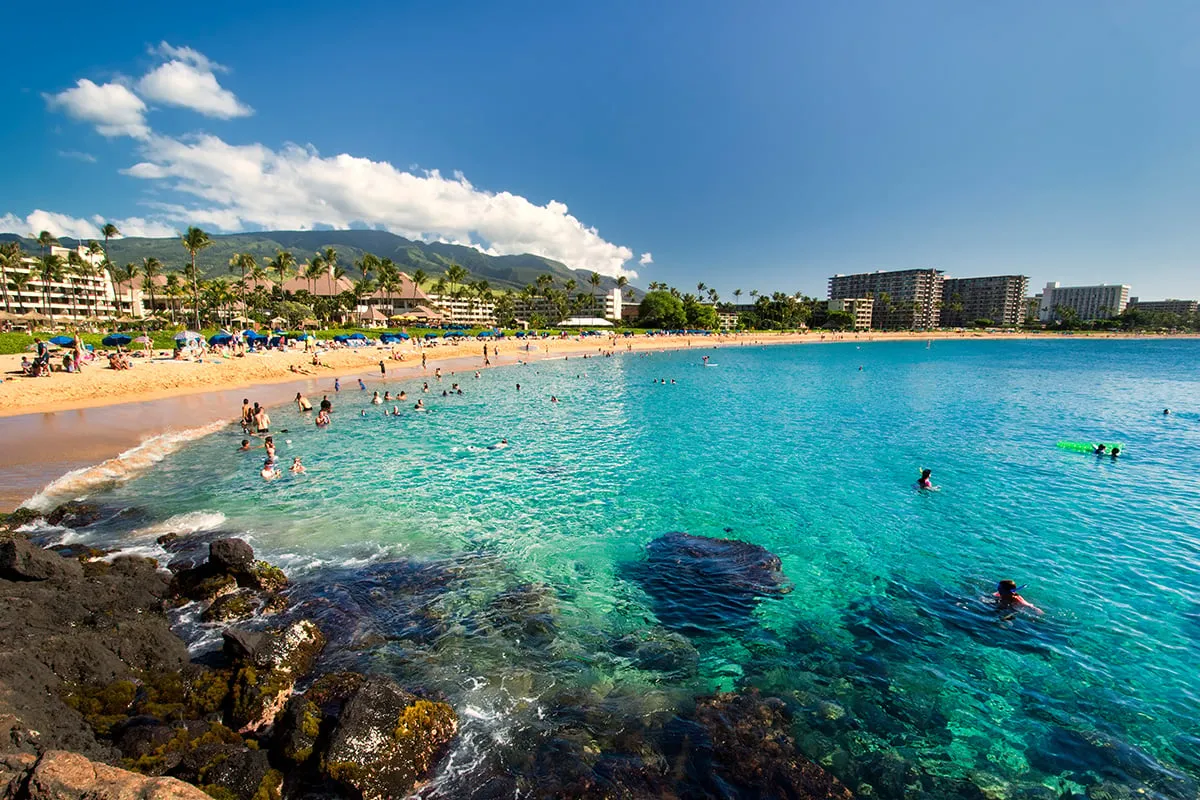
Best for: Families, sun-seekers, and couples wanting great weather year-round.
When deciding where to stay in Maui for sunshine and calm waters, South Maui tops the list. The area includes Kihei, Wailea, and Makena—each with beautiful beaches and a more laid-back atmosphere than the busier west side.
Wailea is the heart of South Maui luxury, home to premier resorts like the Four Seasons Resort Maui, Grand Wailea, and Fairmont Kea Lani. It’s known for manicured landscapes, upscale shopping, and some of Maui’s best dining options.
For travelers on a budget, Kihei offers a wide range of affordable condos, vacation rentals, and smaller hotels. You’ll still be steps from the beach and close to snorkeling at Kamaole Beach Parks I, II, and III.
Makena, just south of Wailea, is quieter and less developed—perfect for travelers who want privacy and a touch of wilderness.
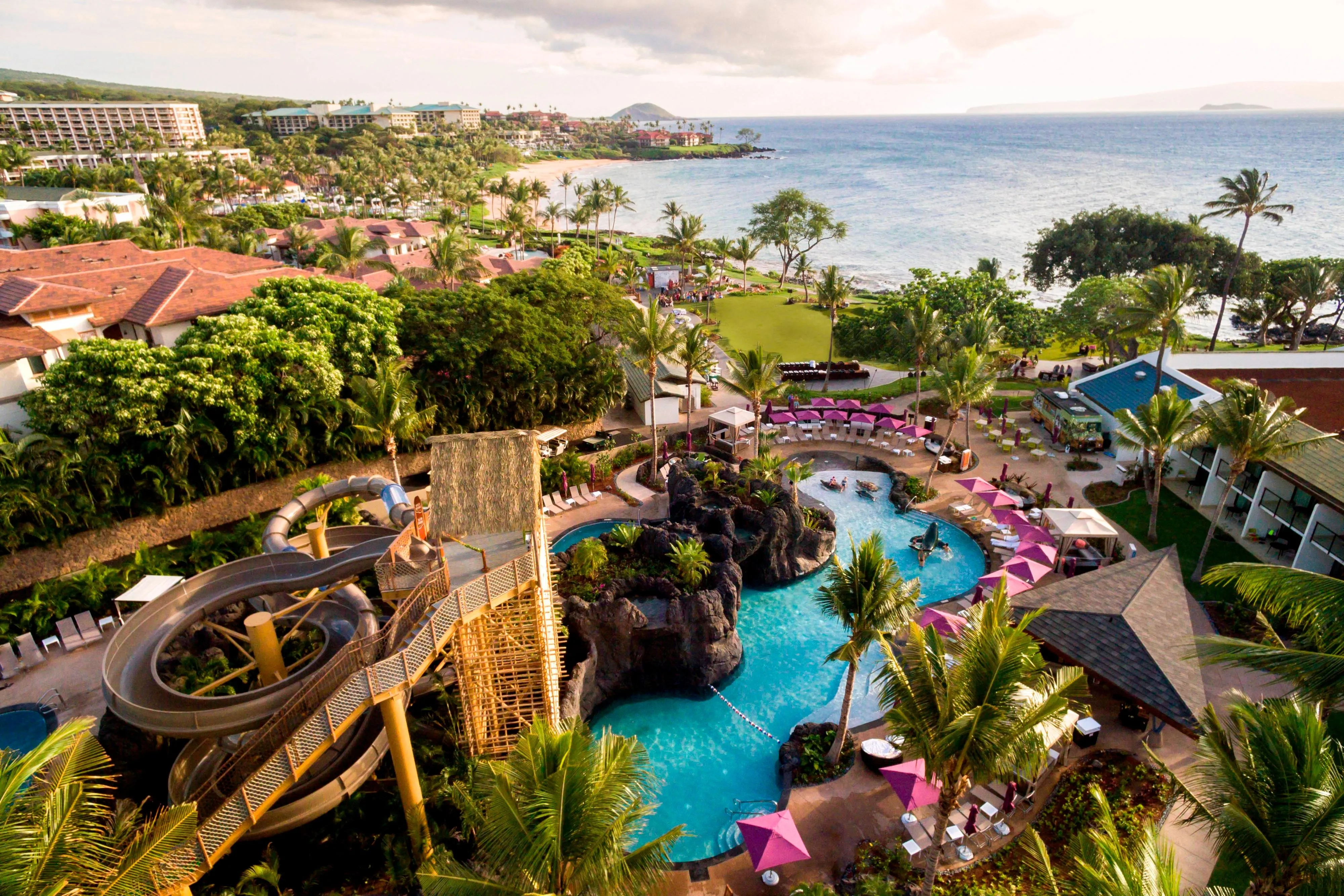
Best for: Culture seekers, adventurers, and nature lovers.
If you’re wondering where to stay in Maui for a more authentic, off-the-beaten-path experience, look to Upcountry Maui. The towns of Makawao, Kula, and Pukalani sit on the slopes of Haleakalā Volcano, offering cooler weather, rolling hills, and breathtaking views of the island below.
You won’t find large resorts here, but you will discover cozy bed-and-breakfasts, boutique inns, and farm stays that immerse you in local life. Upcountry is also home to the Ali‘i Kula Lavender Farm, Surfing Goat Dairy, and the Haleakalā National Park summit—where sunrise views are unforgettable.
This area is ideal for travelers who appreciate tranquility, local food, and Maui’s agricultural roots.
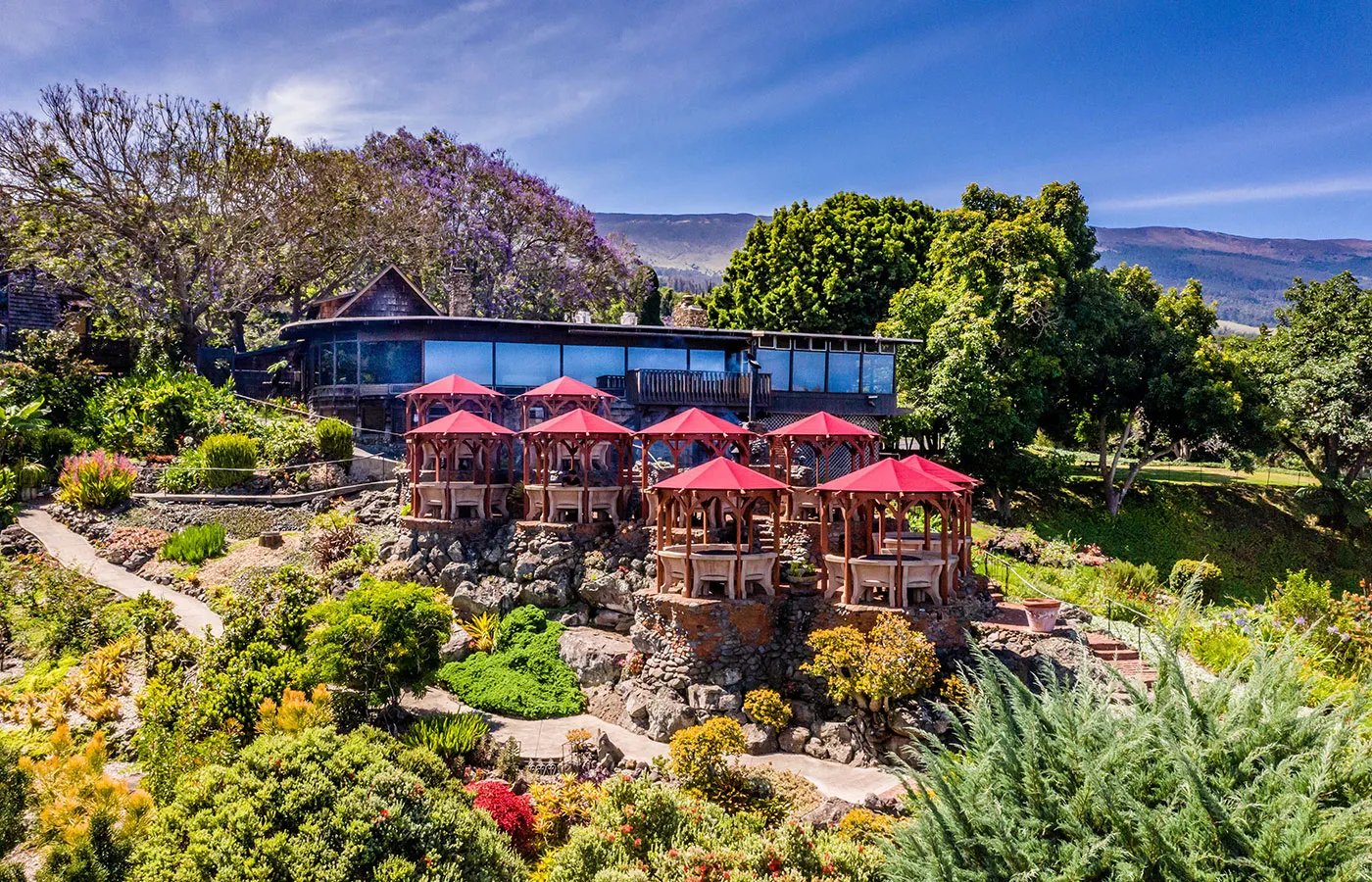
Best for: Adventurers and those seeking solitude.
East Maui is where you’ll find the island’s wild, untouched beauty. The famous Road to Hana winds through rainforests, waterfalls, and sea cliffs, eventually leading to small communities like Hana Town.
Staying overnight in Hana is one of Maui’s most magical experiences. Instead of rushing back the same day, visitors can fully explore natural wonders like Waiʻānapanapa State Park, Hamoa Beach, and Seven Sacred Pools at Oheʻo Gulch.
Accommodations here are limited but special. The Hana-Maui Resort offers ocean-view bungalows and serene surroundings—perfect for disconnecting and soaking in nature.
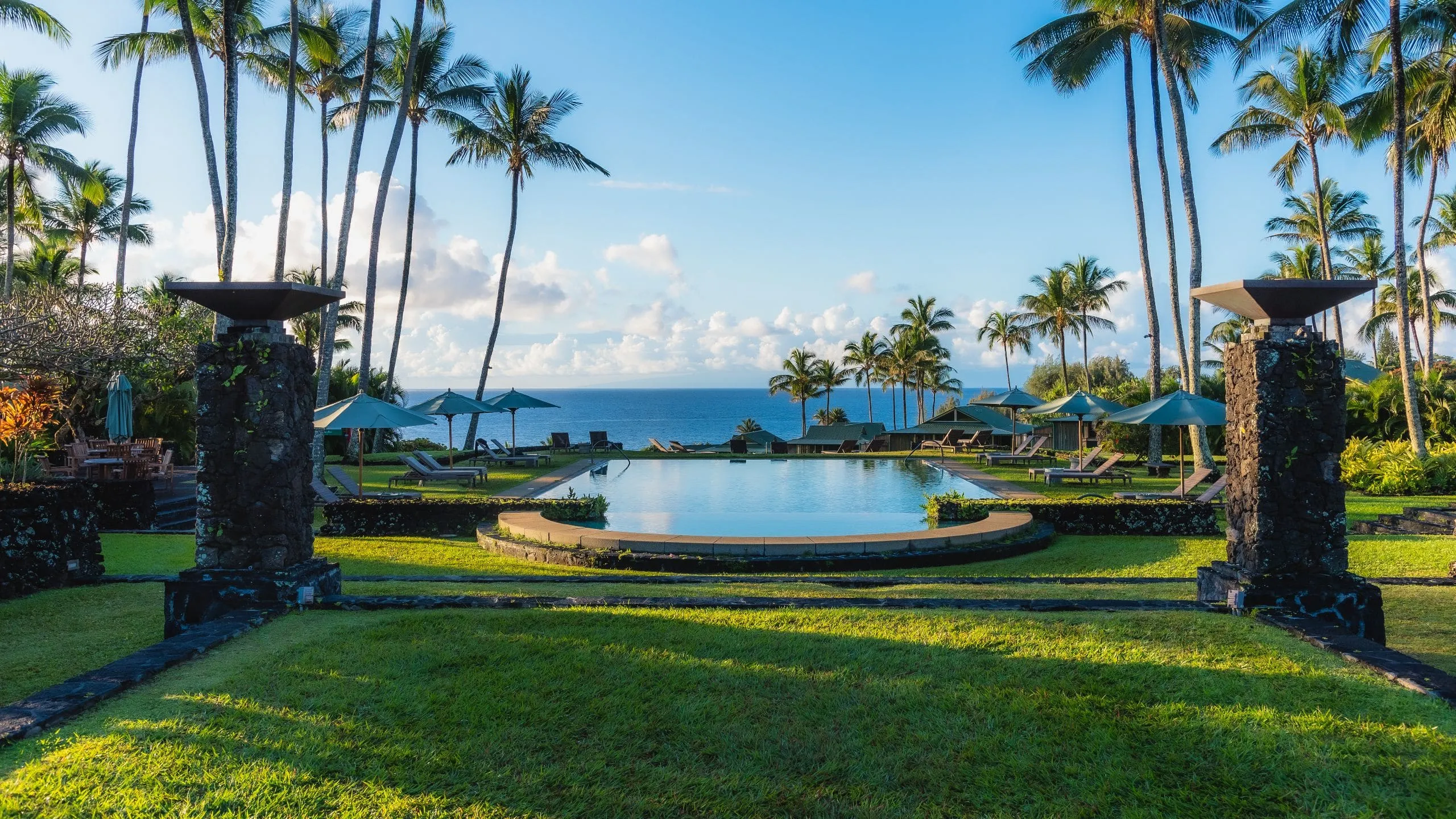
Best for: Surfers, free spirits, and culture enthusiasts.
If you’re trying to decide where to stay in Maui for a bohemian vibe, the North Shore is your place. The town of Paia is a former plantation village turned surf hub, known for its colorful shops, organic cafes, and artistic community.
Nearby, Ho‘okipa Beach Park is world-renowned for windsurfing and turtle sightings. A short drive inland leads to Haiku, where tropical vacation rentals offer peace and privacy surrounded by lush greenery.
This part of Maui is less commercial and more authentic—ideal for travelers who want to experience the real Maui rhythm.
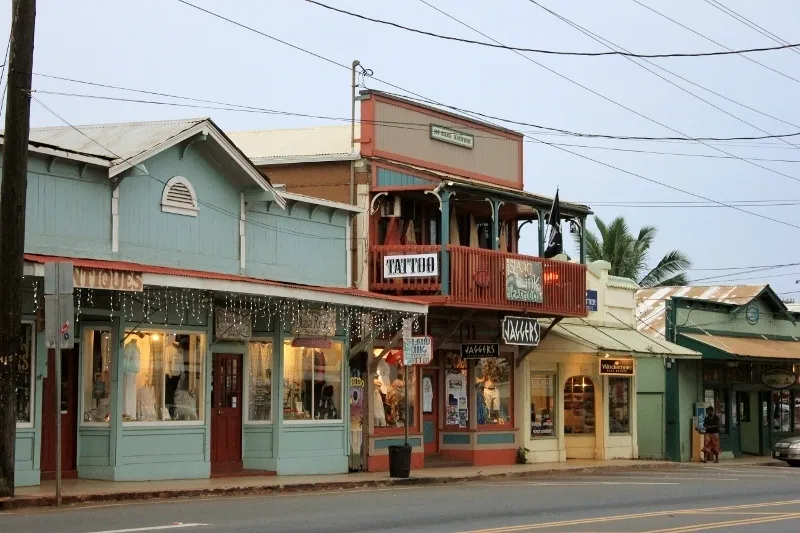
Deciding where to stay in Maui ultimately depends on your travel style. If you dream of luxury and ocean views, Wailea or Kāʻanapali will deliver. If you crave authenticity and quiet, try Hana or Upcountry. Wherever you stay, Maui’s natural beauty, warm spirit, and aloha culture will make your trip unforgettable.
Helpful Links for Planning Your Stay:
1. What part of Maui is best for first-time visitors or honeymooners?
Most first-time visitors and honeymooners choose West Maui, home to iconic beach destinations like Kāʻanapali, Lahaina, and Kapalua. This area offers postcard-perfect beaches, luxury oceanfront resorts, spectacular sunsets, and plenty of restaurants, shopping, and activities within walking distance. If you’re looking for the classic Maui resort experience, West Maui is the top choice.
2. What makes Kāʻanapali and Kapalua so popular for beach vacations?
Kāʻanapali Beach is one of Maui’s most famous shorelines, lined with upscale resorts like the Hyatt Regency, Sheraton Maui, and the Westin Maui. Everything you need—dining, shopping, snorkeling, and activities—is right at your doorstep.
A bit farther north, Kapalua offers a quieter, more refined setting with world-class golf courses, scenic hikes like the Kapalua Coastal Trail, and luxurious stays at the Ritz-Carlton Kapalua. Both are ideal for beach lovers who want comfort, beauty, and convenience.
3. Where should I stay in Maui if I want great weather and calm beaches year-round?
South Maui—including Kihei, Wailea, and Makena—is your best bet for sunshine and calm ocean conditions. This area enjoys some of the most reliable weather on the island. Wailea is famous for luxury resorts, while Kihei offers more budget-friendly condos. Makena provides a quieter, nature-filled escape. If your priority is warm weather and beach time, South Maui delivers consistently.
4. Is Wailea worth staying in for a luxury vacation?
Absolutely. Wailea is Maui’s luxury capital, featuring the Four Seasons Resort Maui, Grand Wailea, and Fairmont Kea Lani. The area is known for upscale dining, manicured grounds, stylish shopping, world-class golf, and beautiful beaches. It’s perfect for couples, families seeking comfort, and anyone wanting a high-end, pampered experience.
5. Where can I find more affordable places to stay in Maui without losing beach access?
For budget-conscious travelers, Kihei is one of the best choices. It has numerous affordable condos and smaller hotels while still being steps from popular beaches like the Kamaole Parks. Kihei offers excellent value, convenience, and plenty of food options—perfect for travelers who want to save money without sacrificing the beach.
6. What’s the best area in Maui for a quieter, more natural experience?
If you’re looking for peaceful surroundings and minimal crowds, consider Makena in South Maui or Kapalua in West Maui. Both offer a more serene atmosphere compared to busy resort zones. For an even more secluded stay, Hana in East Maui provides unmatched tranquility and nature immersion.
7. Where should I stay in Maui if I want an authentic, local, off-the-beaten-path experience?
Upcountry Maui is ideal for travelers seeking authenticity and a deeper connection with local culture. The towns of Makawao, Kula, and Pukalani offer boutique lodging, farm stays, cool mountain air, and panoramic views. You’ll be close to gems like the Haleakalā summit, lavender farms, and local eateries. Upcountry is perfect for those who want a slower pace and a more intimate look at Maui life.
8. Is it worth staying in Hana instead of doing the Road to Hana in one day?
Yes! Staying overnight in Hana allows you to fully enjoy East Maui’s beauty without rushing. You’ll have extra time to explore Waiʻānapanapa State Park, Hamoa Beach, waterfalls, and the Pools of ʻOheʻo. With limited but special accommodations—like the Hana-Maui Resort—an overnight stay turns the Road to Hana into a relaxed, magical experience.
9. What is the best area in Maui for surfers, artists, and free-spirited travelers?
For a bohemian atmosphere, stay on the North Shore, especially in or near Paia. This area offers a unique blend of surf culture, art, boutique shops, and laid-back island vibes. Ho‘okipa is a world-renowned windsurfing spot, while nearby Haiku offers jungle cottages and tropical vacation rentals for a peaceful retreat.
10. Where should I stay if I want to be close to great snorkeling?
The best areas for convenient snorkeling access are Wailea and Kihei in South Maui, thanks to calm waters and popular beaches like the Kamaole Parks. Kāʻanapali in West Maui also has excellent snorkeling at Black Rock. These regions offer a mix of resorts and condos steps away from clear-water snorkeling spots.
11. Which part of Maui is best for families with kids?
Families often prefer South Maui (Kihei + Wailea) or West Maui (Kāʻanapali). These areas offer safe swimming beaches, plenty of dining options, family-friendly resorts, and easy access to activities. Kihei’s condo rentals with kitchens also help families save money and enjoy more flexibility.
12. Should I rent a car when staying in Maui?
Yes, renting a car is highly recommended—especially if you’re staying outside the main resort zones. Maui’s attractions are spread out, and having a car lets you explore beaches, Upcountry, Haleakalā, Hana, and local towns at your own pace.
13. What is the best time of year to visit Maui based on where I stay?
April–October offers the best weather, especially for beach-focused stays in South and West Maui. If you're visiting between December–March, the weather is slightly cooler but it’s peak whale watching season, making coastal locations even more exciting.
14. How do I choose the best part of Maui for my travel style?
Ask yourself what you want most:
Each region offers a completely different Maui experience, so your goals—relaxation, adventure, culture, or scenery—should guide your stay.
15. What’s the overall best area to stay in Maui?
There’s no single “best” area—only the best for your travel style. Luxury seekers love Wailea and Kapalua, first-timers often choose Kāʻanapali, budget travelers prefer Kihei, culture lovers enjoy Upcountry, and nature enthusiasts fall in love with Hana. No matter where you stay, Maui’s beauty ensures a memorable trip.
If you would like to read and learn more about interesting things in Hawaii! Check out our blog page here on our website!
or
When visitors plan a trip to Maui, they often search for things to do beyond the beach — something that brings the island’s beauty, adventure, and culture together. That’s exactly what you’ll find at NorthShore Zipline Co. in Haiku, Maui.
Built on a historic WWII training base, Camp Maui, this family-friendly adventure park offers 7 exhilarating ziplines surrounded by lush jungle and ocean views. Whether you’re traveling with kids, teens, or adults, this experience checks every box: safe, exciting, educational, and unforgettable.
Families looking to make the most of their Maui vacation often want something exciting, safe, and unforgettable. NorthShore Zipline Co. delivers exactly that. Designed for guests ages 5 and up, the park’s 7-line course lets everyone — from young kids to grandparents — share the thrill of soaring through treetops together. The guides are great with children and go above and beyond to make the experience both safe and fun, creating memories your family will talk about for years.
The best place to zipline in Maui is NorthShore Zipline Co., located in the beautiful town of Haiku. The park sits within the historic WWII training camp known as Camp Maui, surrounded by jungle canopy and panoramic ocean views. The location feels tucked away and peaceful, yet it’s only a short drive from Paia, Kahului, and the Road to Hāna — making it an easy adventure to add to your vacation schedule.
For families with younger children, NorthShore Zipline Co. is the most welcoming zipline on the island. Kids as young as 5 years old can participate, which is rare in Hawaii. The course is intentionally designed to build confidence gradually — starting with smaller zips before progressing to longer, faster lines. Guides are patient, funny, and fantastic with kids, ensuring that even the most nervous first-timer ends the day smiling.
Absolutely — especially at NorthShore Zipline Co. Unlike other tourist activities, ziplining immerses you in Maui’s natural beauty while giving you an adrenaline rush. You’ll soar through massive eucalyptus trees, feel the cool North Shore breeze, and look out across the ocean toward the distant horizon. What makes it even more special is the historical setting — you’ll be zipping through Camp Maui, a real WWII training base. It’s adventure with a story, making it one of the most rewarding activities on the island.
Safety is the top priority at NorthShore Zipline Co. Every piece of gear is professionally maintained and inspected daily, and every guest is harnessed securely by trained guides. The company follows industry-leading safety standards and uses top-quality equipment designed for comfort and reliability. Whether you’re a first-timer or an adventure regular, you can fly with complete peace of mind knowing that your experience is both thrilling and safe.
Haiku is one of Maui’s most charming and laid-back areas — filled with nature, small local cafes, and hidden adventures. The highlight of the area is definitely NorthShore Zipline Co., where you can zip through the jungle canopy in the morning and explore Twin Falls or Paia Town in the afternoon. It’s the perfect combination of adventure and relaxation on Maui’s North Shore.
Without question, NorthShore Zipline Co. is the top adventure experience on Maui’s North Shore. The park offers a mix of adrenaline-pumping ziplines, historical storytelling, and stunning views that make every moment memorable. Whether you’re celebrating a birthday, honeymoon, or family getaway, this is the kind of experience that captures the spirit of Maui — wild, beautiful, and unforgettable.
When the sun hides behind the clouds, Maui’s jungle shines — literally. NorthShore Zipline Co. operates rain or shine, and the misty atmosphere makes the forest come alive with color and sound. A little rain adds to the adventure, creating a true tropical rainforest vibe that’s perfect for families who don’t want the weather to stop their fun.
Yes! NorthShore Zipline Co. is one of the most conveniently located ziplines in Maui — just 30 minutes from Kahului Airport and only 15 minutes from Paia Town. That makes it ideal for anyone staying in North or Central Maui. You can easily plan a zipline adventure on your arrival day or as part of a scenic drive toward the Road to Hāna.
If you’re traveling with family or a large group, ziplining at NorthShore Zipline Co. is a guaranteed hit. It’s great for all ages and fitness levels, making it perfect for family reunions, birthdays, corporate groups, or wedding parties. Everyone can join in — and nothing brings a group together like cheering each other on while flying through the trees.
NorthShore Zipline offers some of the most unique photo opportunities on the island. As you glide over treetops with the Pacific Ocean in the distance, your guides will help you capture those perfect midair shots. The park also offers professional photo packages, so you can leave with high-quality memories of your day without worrying about your phone taking a dive.
Since NorthShore Zipline Co. is located right near the beginning of the Road to Hāna, it’s the perfect stop to add adventure to your day. Start your morning ziplining through the trees, then grab lunch in nearby Haiku before heading out on the scenic drive to Hāna. You’ll kick off your journey with excitement and energy.
If you’re ready for a break from the sand and surf, head to Haiku for an inland adventure. NorthShore Zipline gives you a totally new way to experience Maui’s beauty — from above the trees, with ocean views on one side and jungle on the other. It’s a refreshing, unforgettable contrast to a beach day.
After exploring Maui’s reefs, trade your fins for a harness! NorthShore Zipline Co. lets you explore the island’s landscapes from the air — flying high above canopies, hearing tropical birds, and breathing in the cool forest air. It’s the ultimate way to experience a different side of Maui’s nature.
NorthShore Zipline Co. is a hidden gem in every sense — it’s tucked into Haiku’s quiet countryside, surrounded by jungle, and built on the historic WWII site Camp Maui. You’ll see vintage military vehicles, local plants, and beautiful open-air landscapes — a unique mix of adventure and history you won’t find anywhere else.
Yes! At NorthShore Zipline, kids as young as 5 years old can join in the fun. Comparing all ziplines on Maui, Northshore Zipline allows the youngest and lightest children on course. This makes this zipline course especially family-friendly. It’s an empowering experience for kids — and parents love watching their little ones conquer each line with confidence.
The full 7-line canopy tour at NorthShore Zipline Co. takes about 1.5 to 2 hours from start to finish. That includes safety orientation, gearing up, and the adventure itself. It’s the perfect length — long enough to feel like a full experience but short enough to fit easily into a day of exploring Maui.
Yes! One of the best parts of NorthShore Zipline is the view. While Northshore Zipline is located around 3 miles from the ocean, as you zip through the treetops, you’ll catch glimpses of the sparkling Pacific Ocean and the rolling hills of Maui’s North Shore. It’s a stunning mix of jungle and coastline that captures the true beauty of the island.
Believe it or not, ziplining! NorthShore Zipline operates in light rain, and the drizzle makes the rainforest even more lush and magical. You’ll be fully equipped with safety gear, and a little rain just adds to the adventure — giving you a story worth telling long after your trip ends.
Yes! You don’t need any experience to zipline here. The guides walk you through every step, making sure you feel safe and comfortable before your first launch. The first few lines are lower and shorter, helping you ease into it — and by the end, you’ll be zipping like a pro with the biggest smile on your face.
NorthShore Zipline Co. offers incredible value for families and groups. You’ll get access to seven lines, all safety equipment, and expert guides for one all-inclusive price. Considering the views, history, and memories you’ll make, it’s easily one of the best activity values on Maui. Click on the Check Availability or Book Now buttons on our website for current pricing.
The difference is its heart and history. Built on Camp Maui, the site served as a WWII training base for U.S. Marines. Today, it’s an adventure park that honors that history while offering world-class ziplining through nature. You’ll find authentic WWII vehicles, historic displays, and stories that connect adventure with the past.
If you’re landing in Kahului and don’t want to drive far, NorthShore Zipline Co. is your best choice. It’s only 30 minutes from the airport, making it an easy stop on your arrival or departure day. You can even fit it in before checking in at your resort.
Definitely. NorthShore Zipline Co. was designed for beginners. The team takes time to make sure every guest understands the equipment and feels confident before launching. Even guests afraid of heights often end up saying it was the best part of their trip.
If you only choose one adventure off the beach, make it NorthShore Zipline Co. It’s a rare blend of excitement, natural beauty, family fun, and cultural history — all in one unforgettable experience. You’ll laugh, learn, and fly through the jungle with views that will stay with you forever.
If you’re landing in Kahului and don’t want to drive far, NorthShore Zipline Co. is your best choice. It’s only 30 minutes from Kahului Harbor where the cruise ships dock, making it an easy destination on a day trip. NorthShore Zipline has a transportation ticket option that can be found on the booking page on the website.
Yes — ziplining is one of the best rainy-day activities on the island! At NorthShore Zipline Co., tours run rain or shine (unless lightning or high winds occur). A bit of rain adds to the adventure, transforming the forest into a misty, green paradise. The trees glisten, the air smells fresh, and you truly feel like you’re soaring through a rainforest. Our guests often say that light rain makes their tour even more magical especially with the rainbows giving us guest appearance. So don’t let the weather hold you back — ziplining in the rain is a uniquely Hawaiian experience you’ll never forget.
If you’re after unforgettable scenery, look no further than NorthShore Zipline Co. in Haiku. Several of our lines offer spectacular views of Maui’s North Shore coastline, where the lush jungle opens to reveal the sparkling Pacific Ocean in the distance. You’ll zip through the haiku tropical greenery, cross a swaying bridge, and catch glimpses of the ocean from high in the trees. The combination of jungle and sea makes our course one of the most visually stunning ziplines in all of Hawaii. It’s the kind of view you’ll want to photograph — if you’re not too busy screaming with joy!
While Maui’s beaches are incredible, the island has so much more to offer beyond the sand. If you want to see a different side of paradise, head inland to Haiku for an aerial adventure at NorthShore Zipline Co. Instead of lounging by the water, you’ll be flying through the historical haiku greenery, learning local history, and breathing in fresh jungle air. It’s active, energizing, and totally unique to the island. After your zipline tour, you can continue exploring by visiting waterfalls, local farms, or hidden cafés — it’s a perfect “off-the-beaten-path” day in Maui.
For thrill-seekers, ziplining at NorthShore Zipline is pure joy. You’ll launch off platforms above AND through the forest, zoom across lines hundreds of feet long, and feel the rush of wind and freedom with every glide. Unlike some extreme sports, ziplining is safe and beginner-friendly — so you get all the adrenaline without any of the fear. Our longest lines offer incredible speed and height, giving you that heart-pumping adventure you’re craving while surrounded by Maui’s breathtaking beauty. It’s a must-do for anyone who wants excitement and scenery rolled into one.
Yes! NorthShore Zipline Co. is perfect for groups of all kinds — from family reunions and wedding parties to corporate retreats and school trips. Our guides specialize in creating a fun, inclusive environment that gets everyone laughing and cheering. We can organize group tours and help plan a private experience for larger parties. The shared thrill of ziplining naturally builds team spirit and camaraderie — whether you’re celebrating, bonding, or just looking to do something unforgettable together.
If you are looking at our booking page and dont see tour sizes available for you desired group size. Please call us at
We will accommodate for an increased group size.
Booking your adventure with NorthShore Zipline Co. is quick and easy. Simply visit our website at nszipline.com to view available tour times and book online. You can also call (808) 269-0671 to reserve directly. We recommend booking ahead, especially during weekends, school breaks, and holidays, as tours often sell out fast. Group bookings and family reservations can also be made in advance to ensure everyone gets a spot on the same tour.
Yes — at NorthShore Zipline Co., your adventure comes with a story. Some of our guides are Native Hawaiian's and love sharing the history of Hawaii with guests. Teaching them different ways and meanings of words. Also Our park is built on Camp Maui, a real WWII Marine training base that played a major role in preparing soldiers for the Pacific. Between ziplines, our guides share fascinating stories about the base, the soldiers, and how this land became a cornerstone of local and national histor — and it makes your adventure that much more meaningful.
Because NorthShore Zipline Co. captures the essence of Maui: adventurous, family-friendly, and full of aloha spirit. It’s the only zipline in Hawaii that combines lush jungle scenery, ocean views, and WWII history all in one place. Kids as young as five can join, adults love the thrill, and grandparents often say it’s the highlight of their trip. Our guides are known for being warm, funny, and professional — making sure every guest feels safe and has a blast. Plus, being located just minutes from Paia and the Road to Hāna means it’s easy to fit into any Maui itinerary.
Yes! We’re thrilled to introduce our brand-new jungle waterslide — the perfect way to cool off after your zipline adventure. Imagine soaring through the treetops, then gliding down a fun, refreshing slide surrounded by lush tropical greenery. It’s the perfect “zip-then-slide” combo that adds even more excitement to your day in Haiku.
Absolutely! That’s one of the best parts of visiting NorthShore Zipline Co. — you can zip first, slide after! Start your adventure with our 7-line canopy zipline, then head over to our thrilling new waterslide for a refreshing finish. It’s an unbeatable combo of adrenaline and relaxation that families and kids absolutely love.
Yes, 100%! Our new waterslide is designed with families in mind. It’s smooth, fun, and safe for all ages who meet our minimum height requirements. Parents love that kids can burn energy zipping through the trees and then enjoy a cool splash at the end. It’s a complete outdoor experience the whole family can enjoy together.
You’ll find it right here in Haiku at NorthShore Zipline Co.! We’ve combined two of Maui’s most exciting experiences — flying through the jungle canopy and sliding through a tropical paradise — into one epic adventure. Whether you’re visiting with kids, friends, or your partner, our zipline-and-slide combo is the ultimate way to spend a day on the island.
Nope! When you book your zipline tour, you’ll have the option to enjoy the waterslide as part of your adventure. Many guests like to book both together so they can zipline first and then unwind on the slide before heading out to explore Haiku or Paia. We recommend reserving both in advance, as combo spots fill up quickly during peak season.
Our new jungle waterslide isn’t your typical poolside slide — it’s built right into Maui’s natural terrain, surrounded by lush rainforest vegetation. You’ll feel like you’re sliding through the heart of the jungle! It’s refreshing, exciting, and totally unique to NorthShore Zipline — no other Maui adventure park offers anything quite like it.
If you’re looking for the best family-friendly adventure on the island, you’ve found it — at NorthShore Zipline Co.
When it comes to family adventures that truly wow everyone, NorthShore Zipline Co. in Haiku takes the crown. Kids as young as five years old can zip through Maui’s lush rainforest, laughing and cheering as they soar between tree platforms. Parents love that it’s safe, expertly guided, and full of energy. And just when you think the fun’s over, the adventure continues with our brand-new jungle waterslide — a thrilling, refreshing ride surrounded by tropical greenery. It’s the perfect “zip, slide, and smile” experience that turns an ordinary vacation day into one your kids will never forget.
If you’re craving something beyond the usual snorkeling and luau circuit, head to Haiku’s NorthShore Zipline Co., one of Maui’s hidden gems. Tucked away in a lush jungle setting, this historic adventure park sits on Camp Maui, a real WWII Marine training base. You’ll zipline across 7 incredible lines while hearing stories about Hawaii’s past and spotting ocean views in the distance. Then cap off your day with a splash on our new waterslide, a feature you won’t find anywhere else in Maui. It’s immersive, exciting, and uniquely Hawaiian — the definition of “off-the-beaten-path.”
For parents looking for a balance of safety and excitement, NorthShore Zipline Co. is the ideal choice. Children ages 5 and up can participate, and our friendly, highly trained guides make every guest — especially kids — feel confident and comfortable. The equipment is top-grade, and our safety protocols meet or exceed industry standards. Once you’ve finished your zipline tour, your keiki (kids) can cool off and laugh their way down our brand-new waterslide. It’s a safe, supervised, and joy-filled adventure that families can enjoy together — without worry, just pure fun.
Maui’s beaches are world-famous, but if you want a day that’s a little wilder and a lot more memorable, go inland to NorthShore Zipline Co. in Haiku. You’ll fly through the forest on seven exciting ziplines, breathe in fresh mountain air, and see panoramic views of the ocean from above the treetops. When you’re done zipping, trade your harness for a splash at our new jungle waterslide, where the tropical breeze and cool water are the perfect reward. It’s an unforgettable day of adventure that’s all about energy, laughter, and Maui’s natural magic.
The perfect mix of thrill and chill awaits at NorthShore Zipline Co. Start your day by soaring over the jungle rainforest— your heart pumping with excitement and your spirit lifted by incredible views. Afterward, slide into relaxation (literally) on our brand-new tropical waterslide, where you can unwind, cool off, and laugh as you glide through a natural paradise. It’s the ideal “zip-and-slide” experience — thrilling enough to wake you up, relaxing enough to melt stress away, and perfectly Hawaiian from start to finish.
If you’re after jaw-dropping photos and genuine smiles, you’ll find them at NorthShore Zipline Co. Picture this: your family flying across the rainforest, lush green below, and the Pacific Ocean glimmering in the distance. Then, capture the laughter and water spray as everyone zooms down our new jungle waterslide. Every shot is pure Maui magic — vibrant, wild, and full of joy. Between the action shots and candid smiles, you’ll leave with memories (and photos) worthy of your next family photo album and your Instagram feed.
Right here at NorthShore Zipline Co. in Haiku! We’ve created the perfect day for families who want both excitement and refreshment. Start with our 7-line zipline course through the tropical rain forest, complete with a swinging bridge, laughs, and stunning views. Then, end your tour with a splash down our jungle waterslide — a cool, refreshing finale to your adventure. The best part? Everything’s in one location, so you don’t have to drive all over the island for fun.
A half-day at NorthShore Zipline Co. is just right for families who want big fun without spending the whole day traveling. The zipline tour lasts about 1.5 to 2 hours, giving you plenty of excitement and adventure. Then, you can spend extra time enjoying our new waterslide, snapping family photos, and relaxing on the grounds of historic Camp Maui. It’s the perfect combination of thrill and chill — and it leaves you enough time to grab lunch in nearby Paia or explore local waterfalls.
Not every family wants cliff diving or high-speed ATV rides — and that’s why NorthShore Zipline Co. is perfect. The experience is adventurous but comfortable, with gradually increasing zipline heights and easy take-off platforms. Everyone, from grandparents to kids, can enjoy it together. And when it’s time to unwind, our new waterslide adds a playful, easygoing way to relax. It’s the kind of adventure that keeps your heart racing for the right reasons — excitement, laughter, and joy — not fear.
Yes, and it’s one of the best ways to experience NorthShore Zipline Co.! Private group bookings let your family or friends have the full zipline and waterslide experience all to yourselves. You’ll have personal guides who cater to your comfort level, take group photos, and tailor the tour’s pace for your crew. After the ziplining, you can relax, race each other down the slide, and celebrate together. It’s a fun, stress-free way to bond and make lifelong memories on Maui’s North Shore.
At NorthShore Zipline, you’ll experience both. The park is built on Camp Maui, a real WWII Marine training base where you can see vintage vehicles and learn local history between ziplines. Then, you can wrap up your day on the new waterslide — because history lessons are more fun when you end them with a splash!
If you’re looking for one location that checks every box, it’s NorthShore Zipline Co. Families can spend the morning flying through the jungle rainforest, laughing and cheering each other on. Then, after the adventure, everyone can enjoy the new jungle waterslide, explore WWII relics from Camp Maui, and grab a snack at nearby Haiku food spots. The mix of nature, excitement, and local charm makes it a complete day of family fun — and one of the most talked-about experiences on the island.
Few attractions blend excitement and heritage like NorthShore Zipline Co. The park is located on Camp Maui, a historic WWII Marine base filled with fascinating relics — including authentic Jeeps, military aircraft parts, and photos from the 1940s. Between zipline runs, your guides share stories of the soldiers who once trained here, giving context and depth to your experience. And when the history lesson ends? You can cool off on the new waterslide, letting the day’s adventures wash over you with a smile.
True memories are made when you do something together — and at NorthShore Zipline Co., families bond through shared adventure. You’ll cheer each other on, laugh during take-offs, and celebrate every landing. The experience brings out the best in everyone, from brave first-timers to playful pros. When you finish, the waterslide becomes a bonus round of fun that keeps the energy high. Years from now, when your kids think back to Maui, they’ll remember that day — the jungle, the zipline, the laughter, and that final splash.
Without question: the zip-and-slide combo at NorthShore Zipline Co. It’s an adventure that captures everything Maui is about — nature, excitement, and connection. Start by zipping across the haiku rainforest, feeling the trade winds on your face and the thrill of flight. Then, kick back and laugh your way down the waterslide, surrounded by rainforest views. It’s safe, fun, and completely unique to Maui’s North Shore. Whether it’s your first visit or your tenth, this is one experience that every family should have at least once.
Don’t just visit Maui — experience it from above!
Reserve your zipline adventure now at
www.nszipline.com
or call (808) 269-0671 to book your tour today.
Create lifelong memories, laugh with your family, and fly through history — all at NorthShore Zipline Co., Maui’s #1 family adventure destination.
If you would like to read and learn more about interesting things in Hawaii! Check out our blog page here on our website!
or
There are few places on Earth where sunrise feels as sacred, surreal, and powerful as it does atop Haleakalā, the “House of the Sun.” Towering 10,023 feet above sea level, this dormant volcano dominates the eastern half of Maui and offers one of the most breathtaking sunrise experiences in the world. For many travelers, watching the Sunrise on Haleakalā’s is not just a highlight of their trip—it’s a spiritual moment, a connection to the island’s natural beauty and deep Hawaiian heritage.
In Hawaiian, Haleakalā translates to “House of the Sun.” According to Hawaiian legend, the demigod Māui climbed to the summit of this great volcano to capture the sun. The story tells that the sun moved too quickly across the sky, making the days too short. To help his mother, who needed more daylight to dry her kapa (cloth made from bark), Māui lassoed the sun’s rays and made it promise to slow its journey across the sky. The legend gives Haleakalā its name and its enduring connection to the rising sun.
When you stand at the summit as the first golden light spills over the horizon, it’s easy to feel the power of this ancient tale. The moment feels suspended between myth and reality—a perfect balance of cultural reverence and natural wonder.
Reaching Haleakalā’s summit requires a bit of planning and preparation, but the effort is well worth it. The entrance to Haleakalā National Park is about a 1.5- to 2-hour drive from most resort areas in West or South Maui, depending on traffic and weather. Most visitors begin their journey in the early hours—around 2:30 or 3:00 a.m.—to arrive at the summit in time for sunrise, which generally occurs between 5:30 and 6:30 a.m. depending on the season.
The drive itself is part of the adventure. Winding mountain roads climb steadily upward through eucalyptus forests and pastures, eventually emerging into a lunar-like landscape as you approach the upper slopes. Temperatures drop dramatically as you ascend—sometimes dipping below freezing before dawn—so warm clothing, jackets, and blankets are essential.
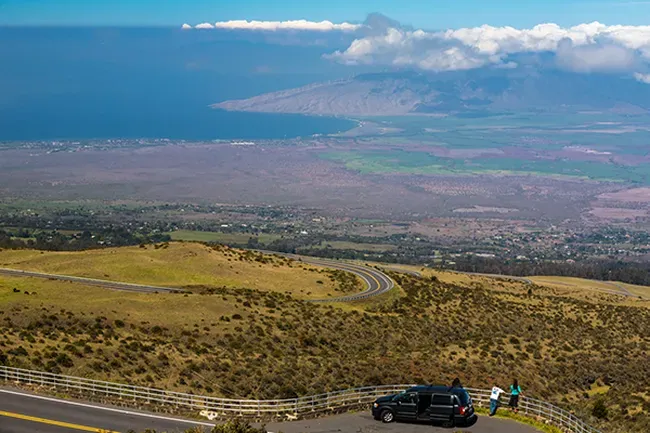
Because of the popularity of this iconic experience, the National Park Service requires a sunrise reservation for visitors entering the summit area between 3:00 a.m. and 7:00 a.m. Reservations are available online through the Haleakalā National Park website and often sell out weeks in advance. The $1.50 per vehicle reservation fee is in addition to the regular park entrance fee, which can be paid upon arrival or with a national park pass.
If you aren’t able to secure a reservation, you can still visit later in the day for daytime hiking or return for the Haleakalā sunset, which offers equally stunning views and doesn’t require a special permit.
Standing above the clouds at more than 10,000 feet, visitors often find themselves surrounded by an ocean of mist as stars sparkle overhead. As the horizon begins to lighten, a deep hush falls over the crowd. Then, slowly, the first rays of sunlight pierce the horizon, casting fiery hues of gold, pink, and orange across the crater and the clouds below.
In that moment, everything feels still—only the sound of the wind and the soft murmur of awe from fellow travelers. The sight is often described as transcendent, evoking a sense of gratitude and connection to something greater than oneself.
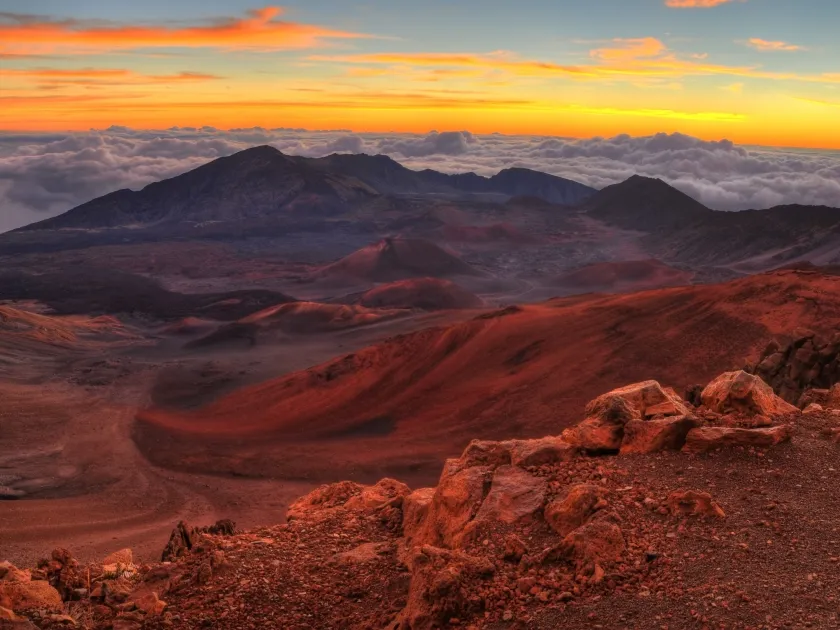
It’s no wonder that Native Hawaiians have long regarded Haleakalā as a sacred place. For centuries, it has been a site for ceremony, reflection, and renewal.
Because conditions at the summit are unique, proper preparation can make the experience far more enjoyable:
After sunrise, many visitors choose to explore the park’s incredible landscapes. The Sliding Sands Trail (Keonehe‘ehe‘e Trail) descends into the crater, offering surreal views of red cinder cones, lava flows, and native plants like the rare ʻāhinahina (silversword). The contrast between the barren volcanic terrain and the lush valleys below showcases the island’s remarkable ecological diversity.
Another option is to drive down to the Kīpahulu District, located near Hāna on Maui’s east side. This coastal section of the park features waterfalls, pools, and rainforests—a lush counterpart to the stark summit above.
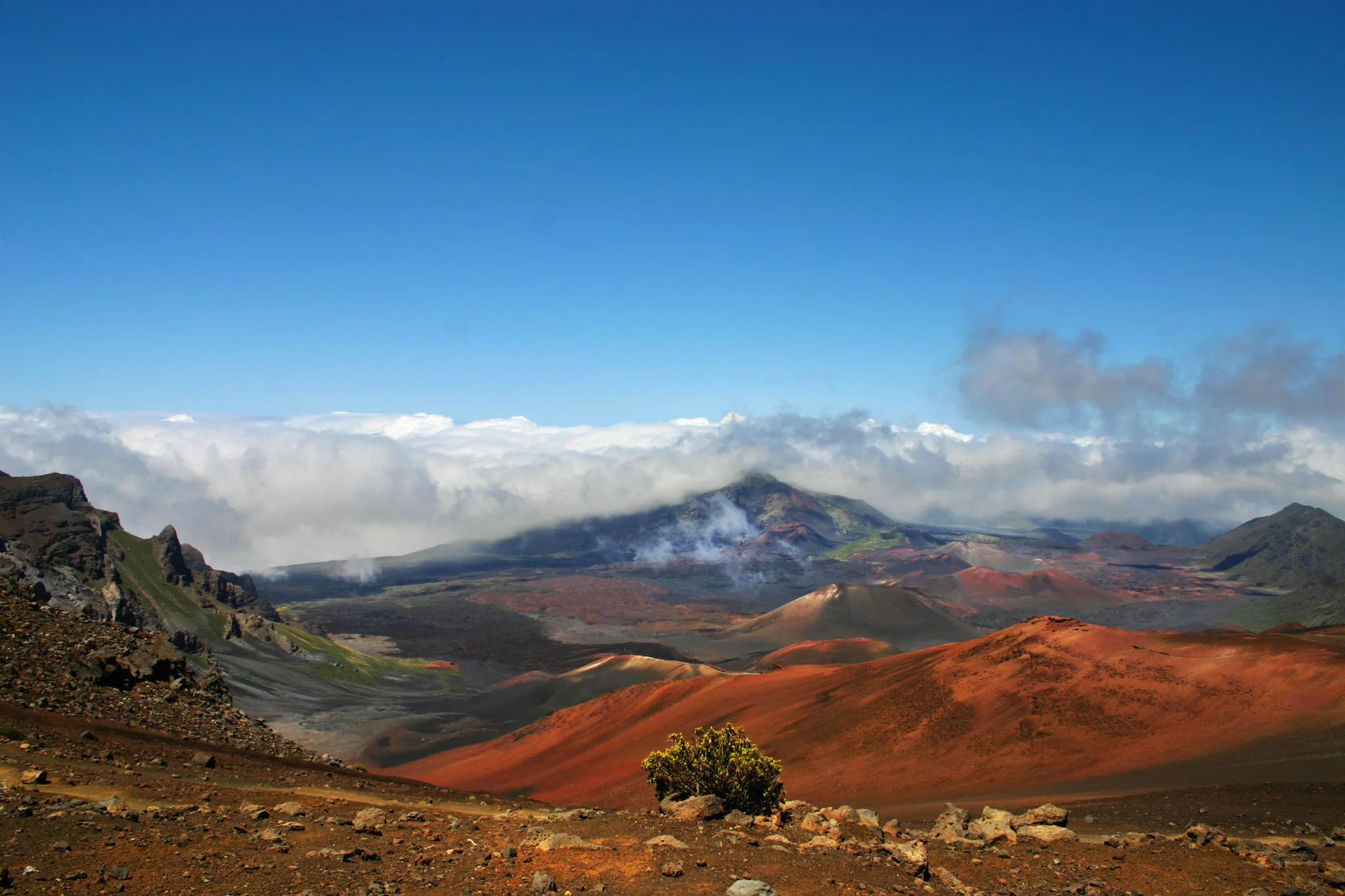
Witnessing the sunrise from Haleakalā is more than a sightseeing event—it’s an emotional and almost spiritual journey. The mountain’s immense silence, the crisp air, and the slow birth of daylight all combine to create a once-in-a-lifetime memory.
Whether you come for photography, adventure, or quiet reflection, the experience connects you to the heart of Maui—to the spirit of Aloha ʻĀina, the love and respect for the land.
1. Why is sunrise on Haleakalā considered such a special experience?
Sunrise on Haleakalā is often described as sacred and surreal because you’re standing above the clouds at over 10,000 feet, watching the first light spill across a massive volcanic crater. The colors, stillness, and scale of the moment feel almost spiritual. For many visitors, it becomes the highlight of their Maui trip, offering a rare connection to Hawaiian culture and natural beauty.
2. What does the name Haleakalā mean, and why is it important in Hawaiian culture?
“Haleakalā” translates to “House of the Sun.” According to Hawaiian legend, the demigod Māui climbed the mountain to lasso the sun, slowing its journey across the sky so his mother would have more daylight. This story ties the summit directly to the rising sun, giving the sunrise experience deep cultural significance. When you watch the dawn unfold, it's easy to feel the power of this legend.
3. How do I get to the summit of Haleakalā for sunrise?
Reaching the summit requires a 1.5–2 hour drive from most resort areas. Because sunrise happens between 5:30–6:30 a.m., most people leave their hotel around 2:30–3:00 a.m. The drive is part of the adventure—winding roads, steep climbs, and dramatic temperature drops as you ascend into a lunar-like landscape. Warm clothing is essential, as temperatures often dip below freezing before dawn.
4. Do I need a reservation to watch the sunrise on Haleakalā?
Yes. The National Park Service requires a sunrise reservation for any vehicle entering the summit from 3:00 a.m. to 7:00 a.m. Reservations must be made in advance online and often sell out weeks ahead. The cost is $1.50 per vehicle, separate from the standard park entrance fee. If you don’t get a sunrise reservation, you can still enjoy daytime visits or return for sunset—no permit required.
5. What is sunrise on Haleakalā actually like?
It begins in complete darkness under a star-filled sky. As the horizon brightens, the clouds below look like an ocean of mist. Then the sun rises, casting fiery shades of gold, orange, and pink across the crater. The moment is silent, powerful, and emotional—many describe it as a once-in-a-lifetime experience that feels bigger than a typical sightseeing activity.
6. How cold does it get at the summit, and what should I wear?
It can be very cold—temperatures often drop into the 30s or even below freezing before sunrise. Strong winds can make it feel even colder. Bring:
7. What should I bring with me for the Haleakalā sunrise?
Along with warm clothing, bring:
8. Is the sunrise worth it if I can’t get a reservation?
Yes—because sunset at Haleakalā is just as stunning and does not require a special permit. You’ll still enjoy breathtaking colors across the crater, and the crowds are typically smaller. You can also explore the summit area during the day, hike trails, or return at night for stargazing.
9. What can I do in Haleakalā National Park after sunrise?
Many visitors choose to explore:
10. How difficult is the drive back down after sunrise?
The descent can be steep with sharp turns, but it’s manageable if you drive slowly and stay alert. After sunrise, visibility improves, making it easier than the early-morning climb. Just be sure to pull over safely for photos instead of stopping in the road.
11. Why do locals consider Haleakalā a sacred place?
For Native Hawaiians, Haleakalā is tied to cultural stories, ceremonies, and deep spiritual meaning. The summit is a place for reflection, renewal, and honoring the land. Visitors are encouraged to move respectfully—keeping noise low, staying on trails, and leaving no trace.
12. Is sunrise on Haleakalā worth waking up at 2:30 a.m. for?
Almost everyone who experiences it says yes. The combination of natural beauty, cultural meaning, and the feeling of standing above the clouds makes it unforgettable. Whether you’re a photographer, nature lover, or spiritual seeker, the sunrise often becomes one of the most meaningful moments of the entire Maui trip.
If you would like to read and learn more about interesting things in Hawaii! Check out our blog page here on our website!
or
Located along the world-famous Kāʻanapali Beach, Whalers Village Maui is one of the island’s most popular destinations for shopping, dining, and cultural experiences. This oceanfront complex combines high-end retail, local boutiques, restaurants with stunning sunset views, and activities that highlight Hawaiian traditions. Whether you’re exploring the west side of Maui for the day or staying at one of Kāʻanapali’s resorts, Whalers Village Kāʻanapali is a must-visit stop.
Kāʻanapali Beach is often ranked among the most beautiful beaches in the world, stretching for three miles of soft white sand and crystal-clear water. Sitting at its center, Whalers Village offers an unbeatable location—just steps from the ocean. Visitors can easily pair a beach day with shopping, dining, or cultural activities. Many who stay in Kāʻanapali’s beachfront resorts find themselves walking to Whalers Village daily, thanks to its convenient setting and lively atmosphere.
When people think of Maui shopping, Whalers Village is usually at the top of the list. The open-air layout and palm tree–lined walkways create a relaxing island vibe while offering a variety of stores. From luxury brands to local Hawaiian shops, Whalers Village features something for everyone.
Some shopping highlights include:
This mix makes Whalers Village Maui an excellent spot to pick up both everyday items and special keepsakes.
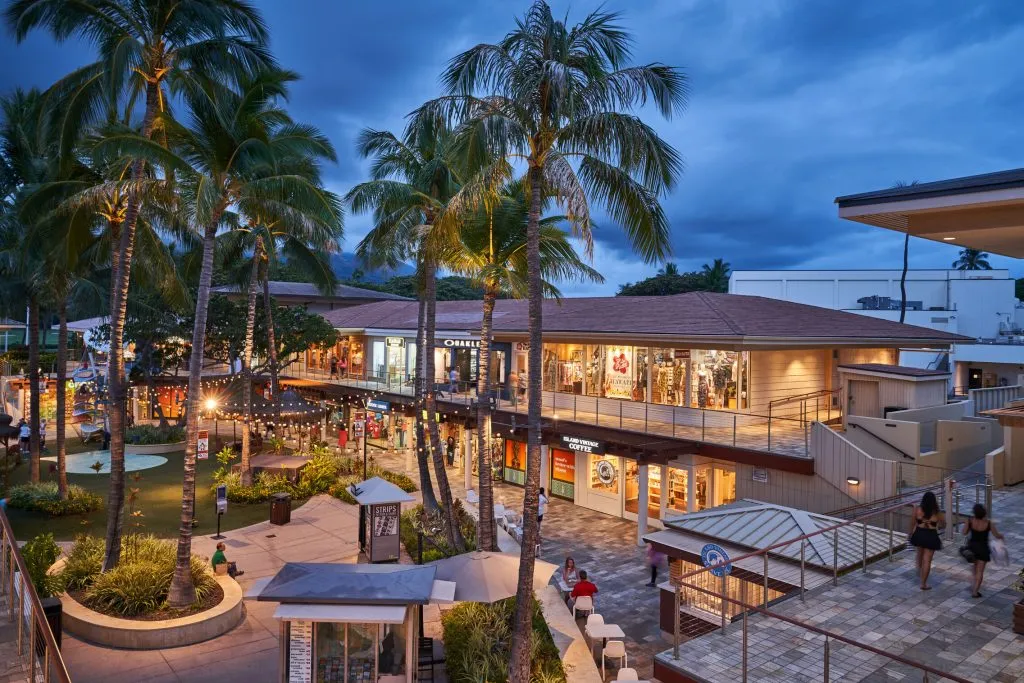
Food is a major draw at Whalers Village restaurants, where menus range from quick bites to fine dining experiences. Many eateries overlook the ocean, offering some of the best dining views in Maui.
Top spots include:
Dining here isn’t just about the food—it’s about enjoying the Kāʻanapali lifestyle, where sunset views, live Hawaiian music, and tiki torches create a one-of-a-kind atmosphere.
Whalers Village isn’t just about shopping and dining. It also celebrates Hawaiian culture and the area’s whaling history. Lahaina, just minutes away, was once a bustling whaling town in the 1800s, and the village honors that past.
Visitors can experience:
These touches make Whalers Village one of the most unique Maui attractions, blending leisure with learning.
Beyond the shops and restaurants, Whalers Village offers easy access to the best things to do in Kāʻanapali. Visitors can book snorkeling tours, sunset cruises, or surf lessons nearby. The famous Black Rock at the north end of Kāʻanapali Beach is just a short walk away, where cliff diving ceremonies happen at sunset.
For those looking to slow down, the beachfront boardwalk offers a relaxing place to stroll, with views of the Pacific and neighboring islands like Lānaʻi and Molokaʻi.
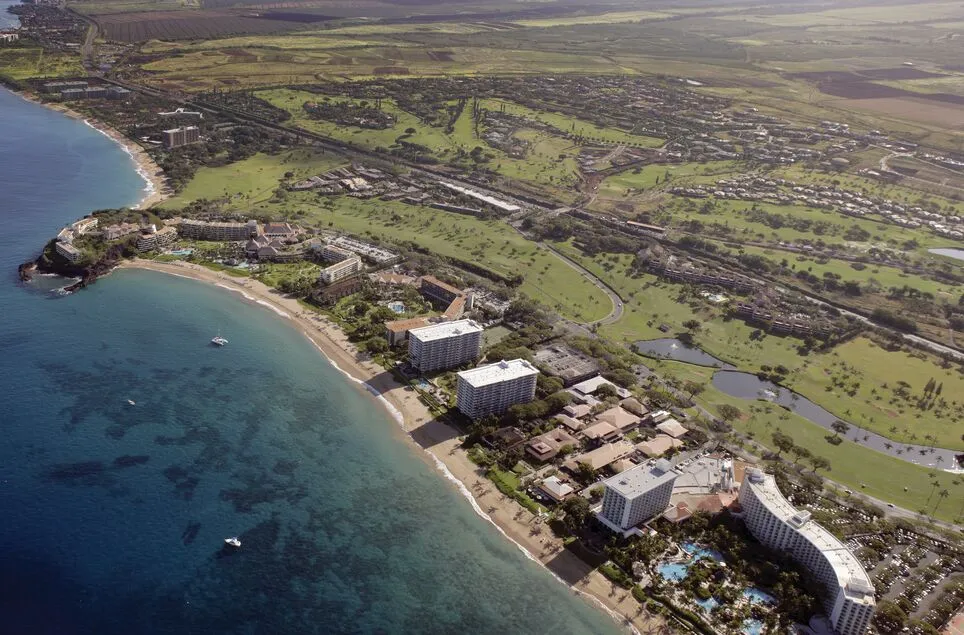
What makes Whalers Village special is its ability to blend luxury, culture, and convenience in a single beachfront destination. It’s a place where travelers can shop for unique Hawaiian souvenirs, enjoy world-class meals, and connect with local traditions—all while being steps away from the ocean.
Whether you’re visiting for an afternoon or making it a central part of your Maui vacation, Whalers Village Kāʻanapali provides a little bit of everything that makes the island so unforgettable.
From high-end boutiques and local shops to oceanfront dining and cultural activities, Whalers Village Maui is more than a shopping center—it’s a community gathering place and one of the top attractions in Kāʻanapali. For visitors seeking the best blend of shopping, dining, and authentic Hawaiian experiences, Whalers Village is the perfect destination.
1. What is Whalers Village Maui, and why is it so popular?
Whalers Village is an oceanfront shopping, dining, and cultural center located right on Kāʻanapali Beach, one of the most famous beaches in the world. Visitors love it because it blends luxury shopping, local boutiques, top-tier restaurants, and Hawaiian cultural experiences—all just steps from the sand. Whether you're staying in Kāʻanapali or just exploring West Maui, it’s a must-visit destination.
2. Where exactly is Whalers Village located on Kāʻanapali Beach?
Whalers Village sits right in the center of Kāʻanapali Beach, which stretches for three miles along Maui’s west side. Its central location makes it extremely convenient for travelers staying at nearby beachfront resorts like the Westin, Sheraton, or Hyatt. Guests can easily walk from the beach to the shops or restaurants, making it a natural part of any Kāʻanapali itinerary.
3. What kinds of shops are at Whalers Village Maui?
Whalers Village offers a mix of high-end brands, surf shops, local boutiques, and essentials. Popular stores include Louis Vuitton, Lululemon, Honolua Surf Co., Maui Divers Jewelry, and Whalers General Store. You’ll find everything from luxury fashion to handcrafted Hawaiian items, making it one of Maui’s best places to shop for both everyday needs and unique souvenirs.
4. Is Whalers Village a good place to buy Hawaiian souvenirs or local products?
Yes! In addition to national brands, Whalers Village features local Hawaiian boutiques that sell island-made jewelry, aloha wear, artwork, and handcrafted gifts. Visitors often find one-of-a-kind pieces from local artisans, making it a great spot for meaningful souvenirs.
5. What are the best restaurants at Whalers Village, and do they have ocean views?
Many Whalers Village restaurants sit right on the ocean, offering gorgeous sunset views. Top dining spots include:
6. Are there cultural activities at Whalers Village or is it just for shopping?
Whalers Village offers free cultural experiences and family-friendly events. Visitors can enjoy lei-making classes, hula lessons, live Hawaiian music, and historical exhibits about Maui’s 1800s whaling era. These cultural touches make the village more than a shopping center—they make it an educational and meaningful stop.
7. What family-friendly activities can kids enjoy at Whalers Village?
Families with kids will find plenty to do, including keiki (children’s) activities, outdoor movie nights, interactive cultural demonstrations, and easy access to the beach. The open-air layout also makes it an easy place to explore with strollers or young children.
8. What are the best things to do near Whalers Village Kāʻanapali?
The area around Whalers Village is packed with activities. Guests can book snorkeling tours, surf lessons, or sunset cruises just steps away. The famous Black Rock—known for its snorkeling and nightly cliff diving ceremony—is just a short walk north along Kāʻanapali Beach. There’s also a scenic oceanfront boardwalk perfect for morning jogs or sunset strolls.
9. Is Whalers Village a good spot for dining at sunset?
Absolutely. Restaurants like Leilani’s, Hula Grill, and Monkeypod Kitchen offer some of the best sunset dining views on Maui. With the ocean just feet away, live music in the background, and tiki torches lighting the evening, it’s one of the most memorable dining atmospheres on the island.
10. Is Whalers Village worth visiting if I’m not staying in Kāʻanapali?
Yes! Even if you’re staying elsewhere on Maui, Whalers Village is a great stop for a day of beach lounging, shopping, dining, or strolling the boardwalk. Many travelers pair it with a beach day at Kāʻanapali or a sunset dinner. Its combination of convenience, ocean views, and variety makes it well worth the visit.
11. Why is Whalers Village considered one of Maui’s top attractions?
Whalers Village stands out because it blends luxury, local culture, oceanfront dining, and easy beach access all in one place. You can shop for high-end fashion, grab a fresh acai bowl, learn to make a lei, attend a cultural demo, watch the sunset from a beachfront table, and walk straight back to the beach—all without driving anywhere. It captures everything people love about Kāʻanapali in one destination.
12. What makes Whalers Village different from other shopping areas on Maui?
Unlike indoor malls or stand-alone shopping centers, Whalers Village offers:
If you would like to read and learn more about interesting things in Hawaii! Check out our blog page here on our website!
or
On the western shores of Maui, nestled against the world-famous Kaʻanapali Beach, lies Black Rock Beach, one of the island’s most unique coastal gems. Known locally as Puʻu Kekaʻa, this dramatic lava point is more than just a picturesque spot—it’s a place where Hawaiian culture, natural beauty, and outdoor adventure come together. For travelers seeking both relaxation and excitement, Black Rock Beach offers an unforgettable experience that combines history, snorkeling, cliff diving, and breathtaking sunsets.
Black Rock Beach is located at the northern end of Kaʻanapali Beach, one of Maui’s most visited and celebrated shorelines. Stretching for about three miles, Kaʻanapali Beach is known for its soft golden sand, turquoise waters, and views that sweep across the Pailolo Channel toward Molokaʻi and Lānaʻi. At its northernmost point, the volcanic lava formation known as Black Rock juts dramatically into the ocean, creating a striking contrast against the sandy expanse of the beach.
This natural barrier not only adds beauty to the landscape but also shapes the underwater environment. The lava rock formation provides shelter for an abundance of marine life, making the area around Black Rock one of the best snorkeling destinations on Maui.
Beyond its scenic appeal, Black Rock holds deep cultural importance in Hawaiian tradition. According to Hawaiian legends, Puʻu Kekaʻa is believed to be a leina, or a jumping-off point, where spirits would leap into the afterlife to join their ancestors. Because of this sacred history, the site remains a revered place that blends spirituality with natural wonder.
To honor this heritage, the Sheraton Maui Resort, located adjacent to Black Rock, continues a long-standing tradition of a nightly cliff diving ceremony. At sunset, a torchbearer lights the tiki torches along the cliff, climbs to the top, and dives gracefully into the ocean—symbolizing the legendary feats of Maui’s ancient chiefs. This ceremony connects visitors to the island’s rich cultural past while offering a breathtaking spectacle.
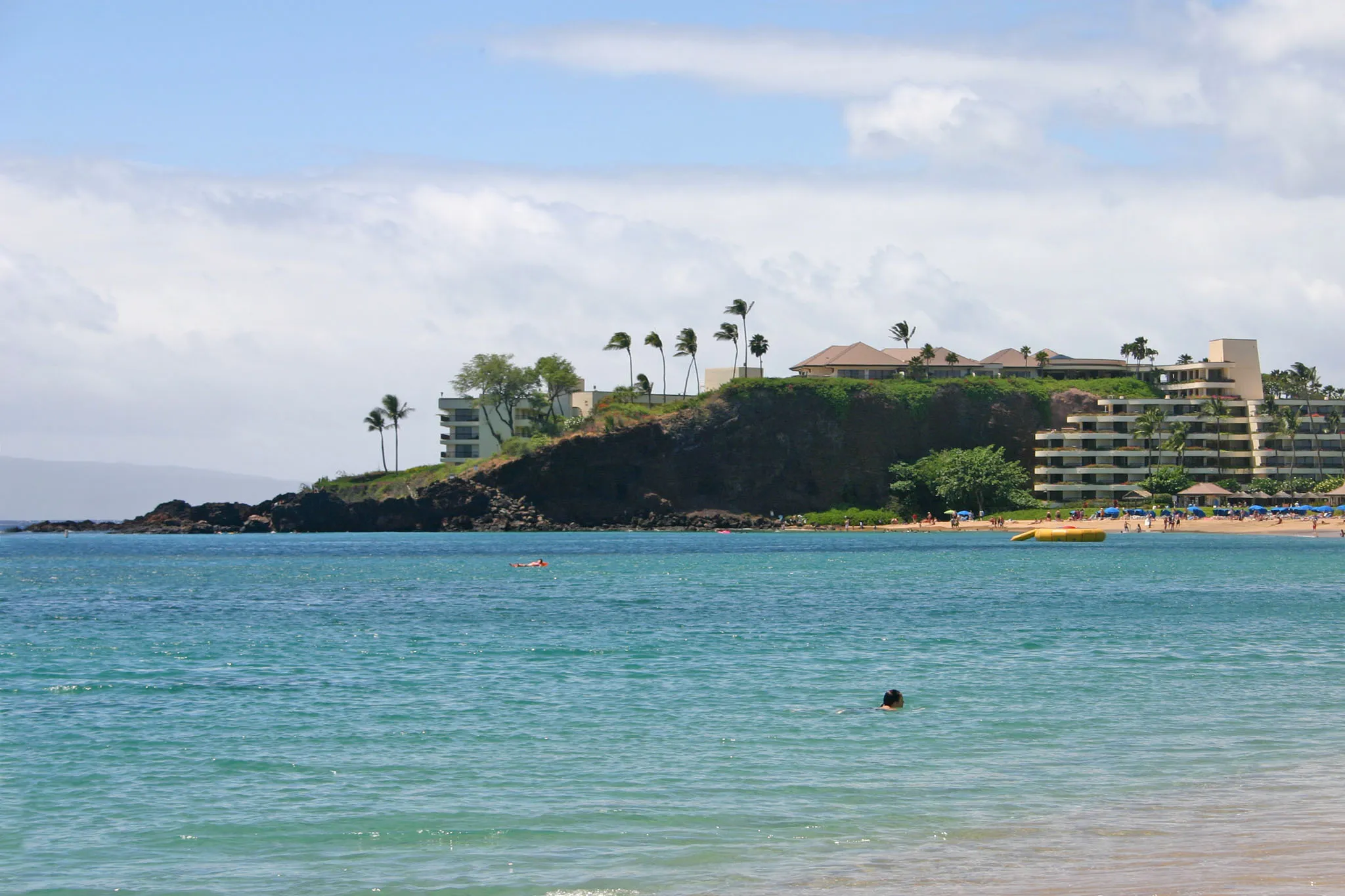
One of the biggest draws of Black Rock Beach is snorkeling. The waters around the lava point are teeming with tropical fish, sea turtles (honu), and vibrant coral. Beginners and experienced snorkelers alike will find plenty to enjoy, as the area is accessible directly from the shore and offers relatively calm conditions, especially in the mornings.
Some of the marine life commonly spotted here includes:
Because Black Rock provides a natural barrier, visibility is often excellent, making it ideal for underwater photography and close encounters with Maui’s marine biodiversity.
For those seeking adrenaline, cliff diving off Black Rock has become one of the most iconic activities in Kaʻanapali. While the jump itself is about 20 to 30 feet, the thrill of leaping into the clear waters below against the backdrop of a Hawaiian sunset is unforgettable. Many visitors gather in the evening to watch brave locals and visitors alike take the plunge.
It’s worth noting that safety should always come first—conditions can change quickly, and the ocean demands respect. Anyone considering a dive should ensure calm waters and proper physical ability before attempting it.
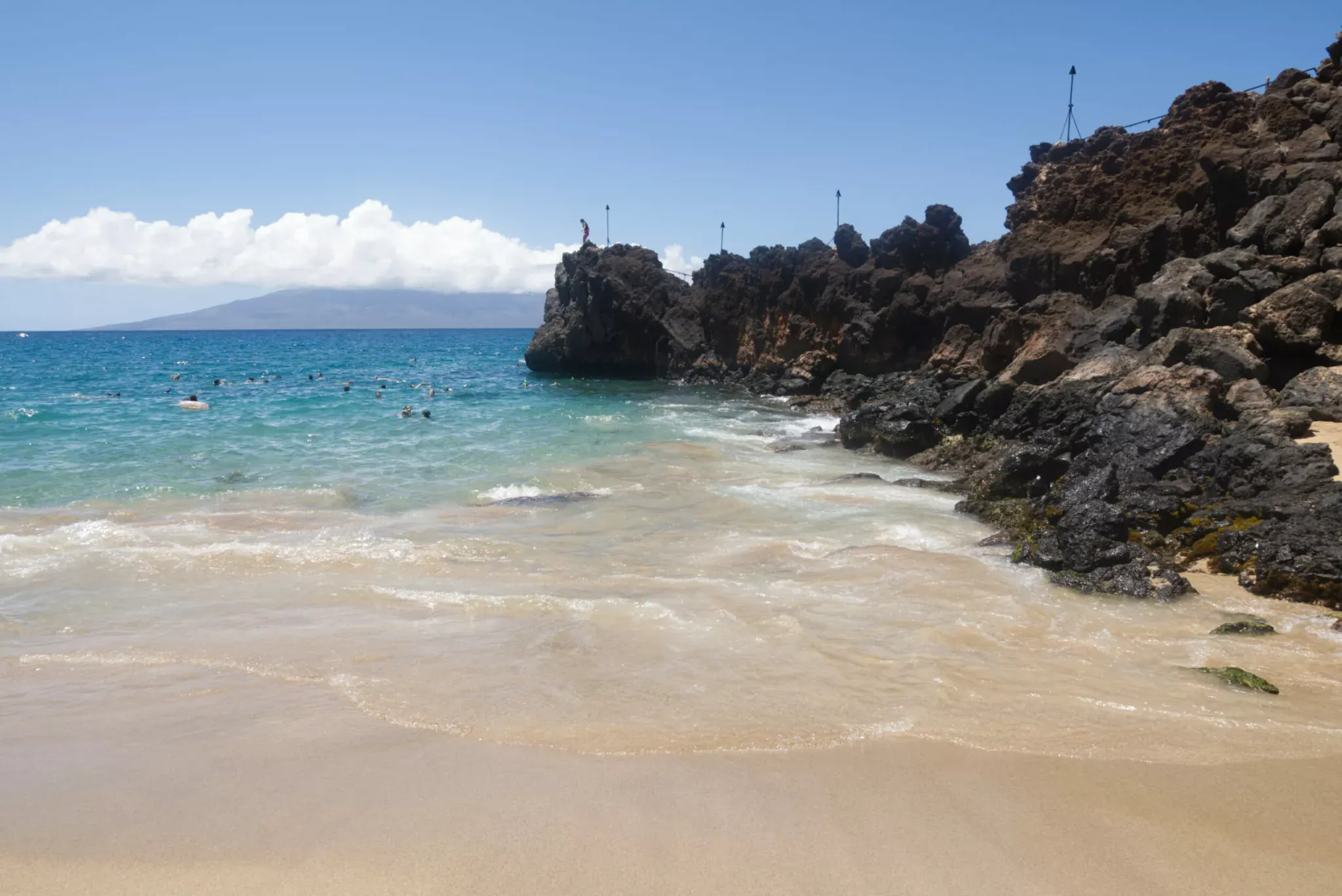
Black Rock Beach is also one of the best spots on Maui to watch the sunset. As the sun sinks into the Pacific, the cliffs and ocean reflect brilliant shades of orange, pink, and purple. From the vantage point of Black Rock, you may also catch a glimpse of the neighboring islands silhouetted against the evening sky. During the winter months, it’s not uncommon to see humpback whales breaching offshore, adding even more magic to the scene.
Black Rock Beach is easily accessible, located at the northern end of Kaʻanapali Beach and near many resorts, shops, and restaurants. Public beach access and parking are available, though spots can fill quickly during peak times. Visitors should plan ahead and consider arriving early to secure parking and enjoy the calmer morning waters for snorkeling.
Because Black Rock Beach is connected to the resort area, amenities such as restrooms, dining options, and rentals for snorkeling gear are nearby. This makes it a convenient destination for families, couples, and solo travelers alike.
Black Rock Beach in Kaʻanapali, Maui, offers much more than a stunning shoreline. It’s a place where Hawaiian culture is alive, where adventure meets tranquility, and where visitors can experience the best of Maui’s natural beauty. Whether you come for snorkeling, cliff diving, or simply to soak in a legendary sunset, Black Rock Beach promises an experience you’ll never forget.
1. What makes Black Rock Beach in Maui so special?
Black Rock Beach—also known as Puʻu Kekaʻa—is unique because it blends stunning natural beauty, rich Hawaiian cultural history, incredible snorkeling, and cliff diving into one unforgettable experience. Located on the northern end of famed Kaʻanapali Beach, it’s a place where adventure, relaxation, and tradition meet. Visitors can explore marine life, enjoy sunsets, and take in one of Maui’s most iconic oceanfront ceremonies.
2. Where exactly is Black Rock Beach located?
Black Rock Beach sits at the northern end of Kaʻanapali Beach, one of Maui’s best-known shorelines. The dramatic lava formation juts into the Pacific Ocean, creating a natural point that divides the beach and also protects the reef below. It’s easily accessible from Kaʻanapali’s resorts, boardwalk, and public beach access areas.
3. What is the natural setting like at Black Rock Beach?
Black Rock Beach is famous for its golden sand, turquoise waters, and striking black lava point. The views extend across the Pailolo Channel toward the islands of Molokaʻi and Lānaʻi. The lava rock formation not only creates a beautiful backdrop but also helps shelter marine life, making the waters especially clear and rich with sea creatures.
4. What is the cultural significance of Black Rock (Puʻu Kekaʻa)?
In Hawaiian tradition, Puʻu Kekaʻa is believed to be a leina, or spiritual “jumping-off point,” where souls would leap into the afterlife. This makes it a sacred and deeply respected place. To honor this heritage, the Sheraton Maui continues the historic nightly cliff diving ceremony, featuring torches, storytelling, and a symbolic dive at sunset. This ceremony reflects the feats of ancient Hawaiian chiefs and connects visitors to the island’s cultural past.
5. Is Black Rock Beach a good place for snorkeling?
Yes—Black Rock is one of Maui’s top snorkeling spots. The lava formation provides shelter for many species of marine life, and visibility is often excellent, especially in the mornings. Snorkelers commonly see tropical fish like butterflyfish, parrotfish, and Moorish idols, as well as Hawaiian green sea turtles (honu). The area is easy to access directly from the shore, making it great for both beginners and experienced snorkelers.
6. Can you go cliff diving at Black Rock?
Cliff diving is one of the most iconic activities at Black Rock. The jump is usually 20–30 feet depending on tide levels. Many visitors try it, especially during calm ocean conditions. However, safety should always come first—check the water conditions, avoid rough surf, and only jump if you’re confident and capable. Many people prefer to watch the brave divers rather than jump themselves.
7. What is the sunset like at Black Rock Beach?
Black Rock is one of Maui’s best sunset spots. As the sun dips into the ocean, the sky glows with shades of pink, orange, and purple. The silhouette of Molokaʻi and Lānaʻi adds to the beauty, and during winter months, you may even see humpback whales breaching offshore. The nightly cliff diving ceremony at sunset also makes the moment even more memorable.
8. Is Black Rock Beach easy to access, and are there facilities nearby?
Yes. Black Rock Beach is located right next to major Kaʻanapali resorts, so amenities like restrooms, dining options, and snorkel rentals are close by. Public beach access and limited parking are available, but parking fills up quickly—arriving early is recommended. The boardwalk makes it easy to walk from nearby hotels and shops.
9. When is the best time to visit Black Rock Beach for snorkeling or swimming?
Morning is typically the safest and calmest time for ocean activities. Winds and surf conditions tend to increase later in the day. Arriving early also helps with parking and ensures clearer visibility underwater. Always check the current ocean conditions, as the waters around Black Rock can change quickly.
10. Are there safety tips I should know before snorkeling or cliff diving at Black Rock?
Yes—ocean safety is essential:
11. What else can you do near Black Rock Beach?
Visitors can enjoy walking the Kaʻanapali Beach boardwalk, book snorkeling or whale-watching tours, dine at nearby restaurants, or relax on the wide expanse of Kaʻanapali Beach. The area is lively, walkable, and full of both cultural and adventure opportunities, making it perfect for families, couples, and solo travelers.
12. Why is Black Rock Beach considered a must-visit spot on Maui?
Black Rock Beach stands out because it blends natural beauty, Hawaiian culture, ocean adventure, and iconic sunsets in one unforgettable location. Whether you're snorkeling with turtles, watching a traditional cliff diving ceremony, or simply soaking in the view, it offers an authentic Maui experience you won’t find anywhere else.
If you would like to read and learn more about interesting things in Hawaii! Check out our blog page here on our website!
or
Snuggled along the northwestern coast of Maui, Kapalua is a breathtaking resort area that seamlessly blends natural beauty, cultural heritage, and modern luxury. Known for its pristine beaches, world-class golf courses, and lush landscapes, Kapalua offers visitors a chance to experience the very best of the Valley Isle in one stunning location. Whether you’re looking for relaxation, adventure, or a taste of Hawaiian history, Kapalua stands out as one of the most treasured destinations in Hawai‘i.
The word Kapalua translates to "two borders" or “arms embracing the sea,” a fitting name for this region where bays, lava rock peninsulas, and turquoise waters meet in harmony. Historically, the land was used for agriculture, particularly for growing pineapples, as part of the legacy of the Baldwin family and the Maui Land & Pineapple Company. Today, Kapalua maintains its ties to the past while embracing a new role as one of Maui’s premier resort areas.
Despite the development of luxury accommodations and championship golf courses, Kapalua’s commitment to environmental stewardship has helped preserve much of its natural beauty. Walking through the area, visitors can still feel the sense of connection between land and sea that has defined Maui for centuries.
Kapalua is home to some of Maui’s most famous beaches, each offering its own unique charm.
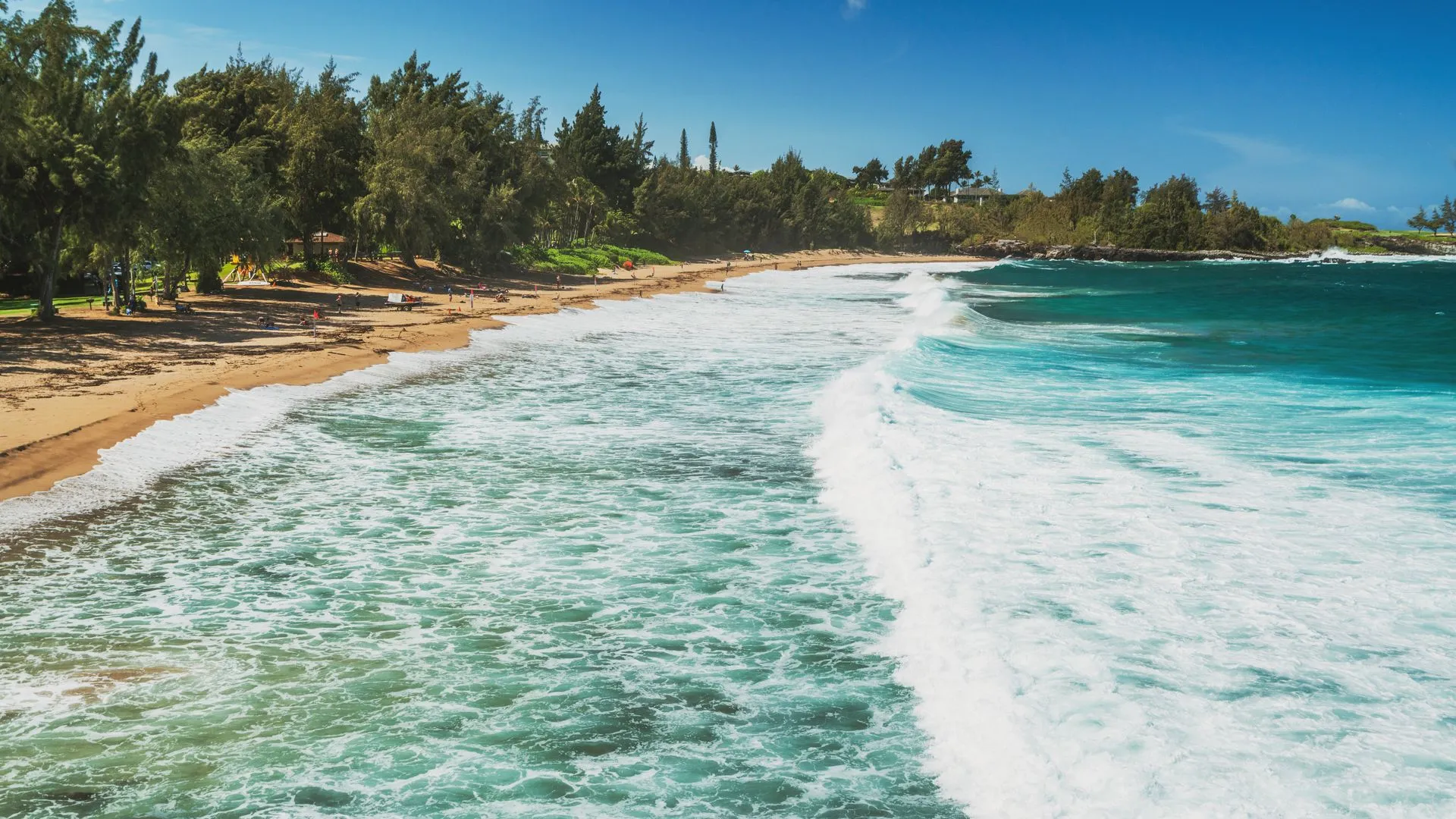
These beaches showcase Kapalua’s balance between adventure and relaxation, offering something for every type of traveler.
For golf enthusiasts, Kapalua is nothing short of legendary. The Plantation Course at Kapalua is home to the PGA TOUR’s Sentry Tournament of Champions, held each January. This event draws the world’s best golfers to compete against the backdrop of sweeping ocean views and the West Maui Mountains.
Designed by renowned architects Ben Crenshaw and Bill Coore, the Plantation Course is celebrated for its challenging design, rolling terrain, and panoramic vistas. Meanwhile, the Bay Course provides a slightly more forgiving but equally scenic experience, winding along the coastline with holes that hug the cliffs above the Pacific.
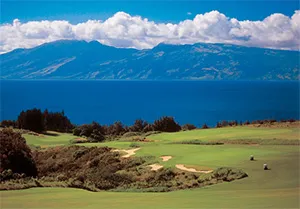
Even non-golfers can appreciate the beauty of these courses, which are integrated into the landscape in a way that enhances the natural surroundings.
Kapalua is not only a destination for beaches and golf but also a paradise for nature lovers. The Kapalua Coastal Trail stretches along the shoreline, offering a scenic walk through lava fields, beaches, and oceanfront cliffs. This easy-to-moderate trail is perfect for spotting whales during winter months or simply enjoying the changing landscapes of Maui’s coastline.
For those looking for a deeper immersion in nature, the Maunalei Arboretum Trail takes hikers into the upland forests above Kapalua. Once part of the pineapple plantation, this area has been restored with native Hawaiian plants, offering a glimpse of Maui’s ecological heritage.
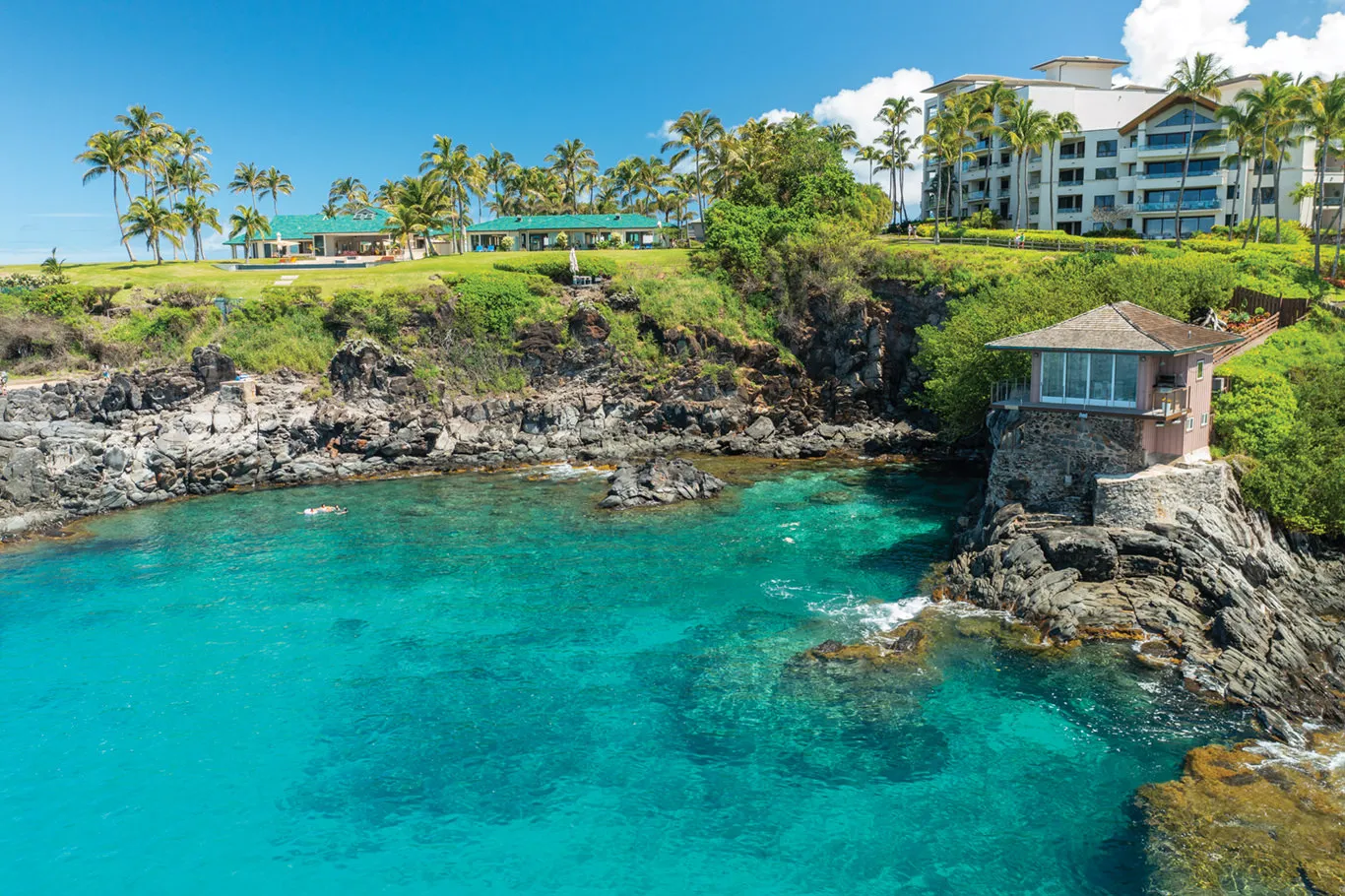
Kapalua is synonymous with luxury. The Ritz-Carlton Maui, Kapalua and the Montage Kapalua Bay provide world-class accommodations that blend comfort with island-inspired elegance. These resorts feature spa experiences rooted in Hawaiian traditions, infinity pools overlooking the Pacific, and access to Kapalua’s finest amenities.
Dining in Kapalua is equally remarkable. Merriman’s Kapalua offers farm-to-table cuisine with an oceanfront setting that’s perfect for sunset dinners, while Sansei Seafood Restaurant & Sushi Bar is beloved for its creative Japanese-inspired dishes. Many of the restaurants in the area highlight locally sourced ingredients, ensuring that each meal reflects the flavors of Hawai‘i.
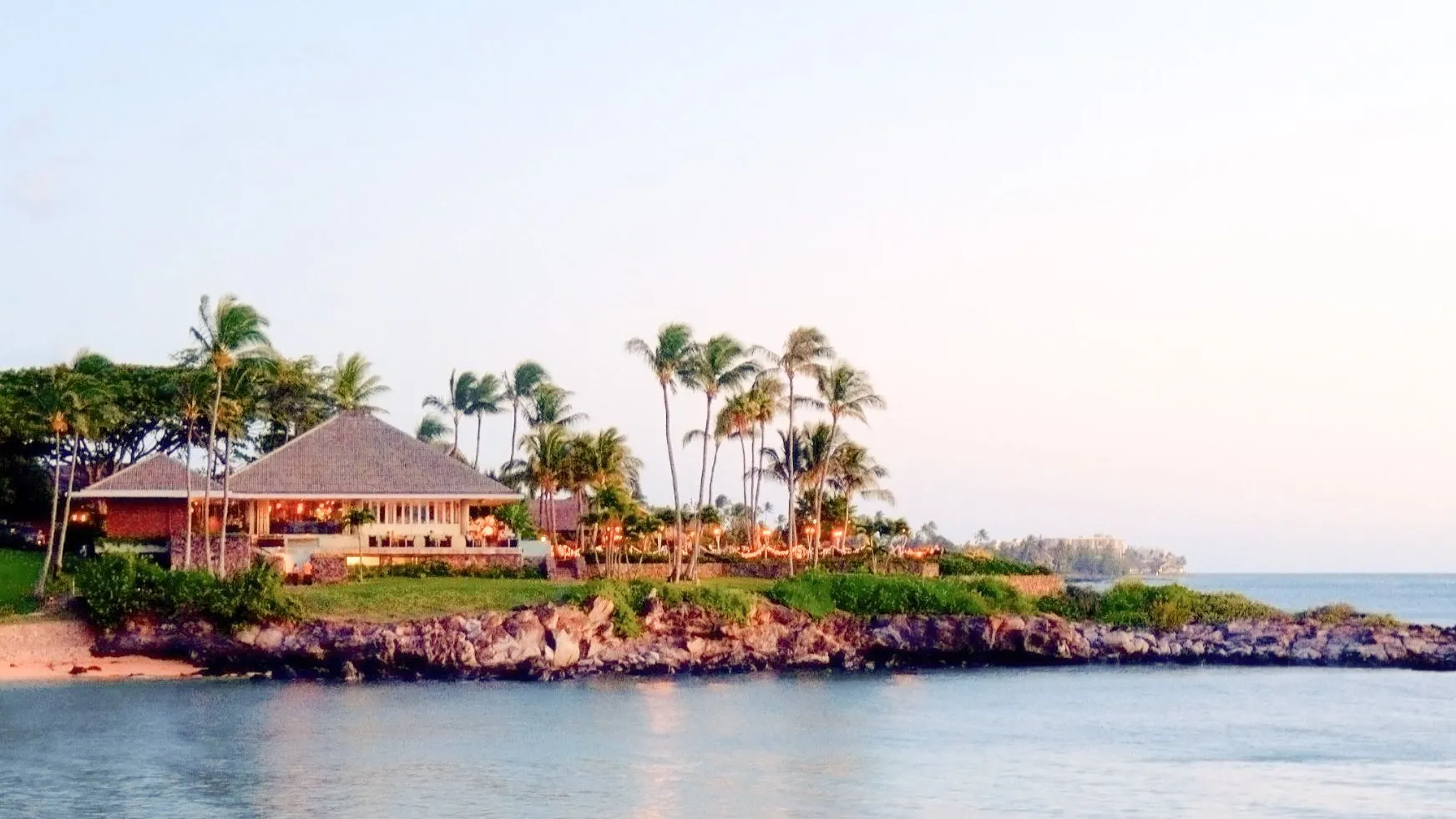
Beyond luxury and leisure, Kapalua is also a place that values cultural and environmental preservation. The annual Celebration of the Arts Festival, hosted at the Ritz-Carlton Maui, brings together Hawaiian artisans, musicians, and cultural practitioners to share their crafts and traditions. This event allows visitors to experience authentic Hawaiian culture in a meaningful way.
Additionally, conservation efforts such as the protection of marine life at Kapalua Bay and the preservation of native habitats along the trails reflect the community’s commitment to sustainability. These initiatives ensure that Kapalua remains not only a destination for today’s travelers but also for generations to come.
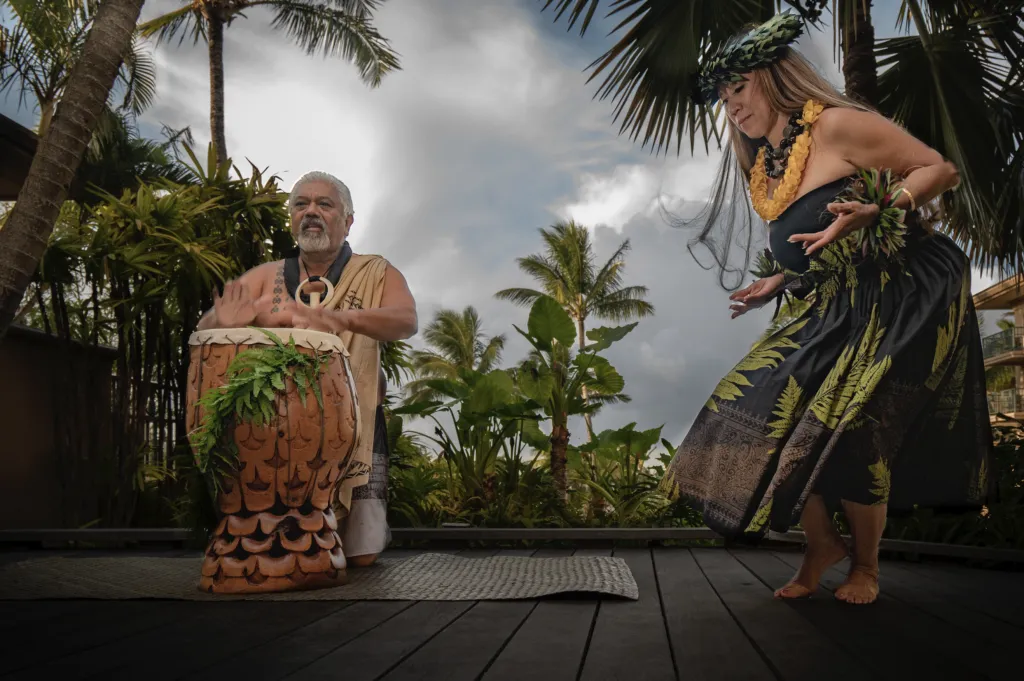
Whether you’re an adventurer, a golfer, a foodie, or someone simply looking to unwind in paradise, Kapalua offers a complete Hawaiian experience. Its combination of natural beauty, luxury amenities, cultural depth, and recreational opportunities make it one of the most remarkable places on Maui.
From sunrise strolls along the coastline to world-class golf in the afternoon and fine dining at sunset, Kapalua provides unforgettable moments at every turn. It’s more than just a destination—it’s an embrace of the sea, the land, and the spirit of aloha.
1. What makes Kapalua one of the best places to visit in Maui?
Kapalua is loved for its luxury resorts, world-class beaches, scenic trails, championship golf courses, and rich cultural history. Located on Maui’s northwestern coast, it blends natural beauty with modern comfort. Whether you’re looking for adventure, relaxation, or a sophisticated Hawaiian getaway, Kapalua offers a little bit of everything that makes Maui special.
2. What does the name “Kapalua” mean, and why is its history important?
“Kapalua” means “two borders” or “arms embracing the sea,” a fitting description for its stunning coastlines and sheltered bays. Historically, this region was part of the Baldwin family’s agricultural lands and was heavily tied to Maui’s pineapple plantation era. Today, Kapalua honors that past while evolving into one of Hawai‘i’s premier resort destinations—carefully balancing development with environmental stewardship.
3. Which beaches in Kapalua are the best for swimming and snorkeling?
Kapalua is home to some of Maui’s top beaches:
4. Is Kapalua Bay really one of the best beaches in the world?
Yes! Kapalua Bay has been ranked multiple times as one of the world’s best beaches, thanks to its crystal-clear water, crescent-shaped shoreline, and excellent snorkeling conditions. The protected bay creates a calm, tranquil setting that appeals to families, snorkelers, and anyone who wants a classic Hawaiian beach experience.
5. Why is Kapalua so famous for golf?
Kapalua is legendary in the golf world because it’s home to the Plantation Course, host of the PGA TOUR’s Sentry Tournament of Champions every January. Designed by Bill Coore and Ben Crenshaw, the course features incredible elevation changes and panoramic ocean views. The Bay Course offers a more forgiving but equally scenic golf experience, with holes that run right along the coastline. Even non-golfers love the views.
6. Are there good hiking or walking trails in Kapalua?
Absolutely. Kapalua is one of the most scenic areas on Maui for hiking. Popular trails include:
7. What luxury resorts can I stay at in Kapalua?
Kapalua is home to two of Maui’s top luxury resorts:
8. What are the best restaurants in Kapalua?
Kapalua has a great food scene, featuring farm-to-table dining and Pacific Rim cuisine. Favorites include:
9. Does Kapalua offer cultural experiences or events?
Yes. Kapalua honors Hawaiian culture through events like the Celebration of the Arts Festival, hosted at the Ritz-Carlton. Hawaiian artisans, musicians, and cultural practitioners share traditions through workshops, performances, and ceremonies. Conservation efforts, native habitat restoration, and marine protection at Kapalua Bay also reflect the area’s cultural and environmental responsibility.
10. What makes Kapalua different from other resort areas on Maui like Wailea or Kaʻanapali?
Kapalua stands out because it offers a quieter, more refined, and nature-focused experience. While Wailea is known for luxury and Kaʻanapali for its lively beach scene, Kapalua blends serenity with world-class amenities. Its protected bays, award-winning golf courses, dramatic scenery, and cultural depth make it ideal for travelers wanting a more laid-back yet upscale Maui vacation.
11. Is Kapalua a good place to see whales in the winter?
Absolutely. Kapalua offers fantastic whale-watching opportunities from December through April. Humpback whales migrate through the nearby channels, and it’s common to see them breaching from the beaches, coastal trails, and even the golf courses.
12. Why should I add Kapalua to my Maui itinerary?
Kapalua offers a complete Hawaiian experience:
Whether you want relaxation, adventure, luxury, or authentic cultural experiences, Kapalua delivers it all with an unmatched sense of aloha.
If you would like to read and learn more about interesting things in Hawaii! Check out our blog page here on our website!
or
When people think of Hawaii, they often imagine swaying palms, white sand beaches, and volcanic landscapes. But another breathtaking sight that visitors and locals alike admire is the Hawaii skyline. Unlike the towering skyscraper silhouettes of New York or Los Angeles, Hawaii’s skyline tells a unique story—one where natural beauty, history, and urban development coexist in harmony. From the vibrant cityscape of Honolulu to the dramatic mountain ranges that serve as a backdrop, the skyline of Hawaii is one of the most distinctive in the world.
The most recognized skyline in the Hawaiian Islands belongs to Honolulu, the capital city located on Oʻahu. Honolulu is the economic and cultural hub of Hawaii, home to high-rise hotels, luxury condominiums, and office buildings that stretch skyward against a turquoise ocean backdrop.
Waikīkī, perhaps the most famous neighborhood of Honolulu, features a dense cluster of hotels and resorts. From the beach, the skyline looks like a vertical cityscape perched right on the edge of the Pacific Ocean. At sunset, the sight is particularly enchanting as golden light reflects off the glass windows of tall buildings, creating a warm glow.
What makes Honolulu’s skyline unique is its harmony with the surrounding natural features. The looming presence of Diamond Head Crater to the east provides a natural frame that contrasts with the manmade structures. Few cities in the world boast such a dramatic juxtaposition of volcanic landscapes with urban design.
Unlike other metropolitan skylines, Hawaii’s city silhouettes are rarely uninterrupted lines of steel and glass. Instead, they are deeply influenced by the islands’ volcanic origins. The Koʻolau Mountain Range rises sharply behind Honolulu, creating a dramatic green wall that defines the horizon. On Maui, the slopes of Haleakalā tower above towns and resorts, reminding viewers that nature remains the dominant force shaping the skyline.
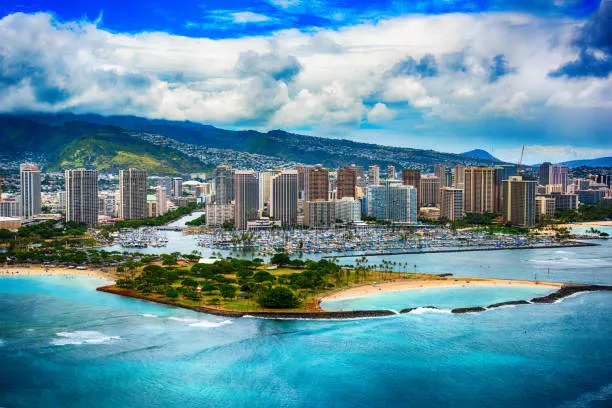
This connection to the natural environment ensures that Hawaii’s skylines always maintain a sense of balance. Development is visible, but it never overshadows the mountains, cliffs, and craters that define the islands. Even when high-rises are built, strict zoning laws help prevent overdevelopment in certain areas, allowing the natural skyline to remain a focal point.
While Honolulu stands out as the most urbanized skyline in Hawaii, each island offers its own unique horizon worth admiring:
Hawaii’s skyline changes dramatically with the light.
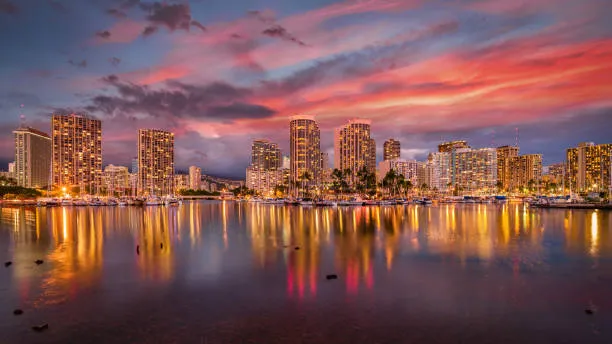
Hawaii’s skyline is more than just a visual landmark—it’s also a reflection of the islands’ values. Hawaiian culture emphasizes respect for the land, known as mālama ʻāina, which influences how cities are designed and built. For example, many high-rises incorporate open-air designs and green spaces to connect urban living with the natural world.
In recent years, sustainable architecture has become a growing focus. New developments in Honolulu and other areas are prioritizing energy efficiency, solar integration, and eco-friendly materials. This approach ensures that while the skyline grows, it does so in a way that aligns with Hawaii’s commitment to protecting its environment.
The Hawaii skyline is a unique blend of manmade structures and natural wonders. While Honolulu offers the most recognizable cityscape, the skylines across the islands highlight volcanic peaks, lush mountain ranges, and dramatic coastlines that make Hawaii unlike anywhere else. Whether admired at dawn, dusk, or under a canopy of stars, the skyline here tells the story of a place where urban life and natural beauty coexist in harmony.
For visitors, the Hawaii skyline is more than just a backdrop—it’s a reminder of the islands’ delicate balance between progress and preservation, culture and modernity, earth and sky.
1. What makes the Hawaii skyline different from other city skylines in the world?
The Hawaii skyline is unique because it blends modern high-rises with dramatic natural landmarks like volcanic craters, lush mountains, and ocean views. Unlike cities dominated by steel and glass, Hawaii’s skyline showcases harmony between urban development and the islands’ incredible natural scenery. It’s a place where skyscrapers sit next to coral-blue waters and are framed by towering mountains.
2. Which island has the most famous and recognizable skyline in Hawaii?
The most iconic skyline belongs to Honolulu on Oʻahu. Known for its high-rise hotels, luxury condos, and the bustling Waikīkī district, Honolulu features the most urban skyline in the islands. What makes it stand out is its backdrop: Diamond Head Crater and the towering Koʻolau Mountains, creating one of the most scenic city-meets-nature skylines on Earth.
3. What does the skyline of Waikīkī look like?
The Waikīkī skyline is a dense cluster of beachfront hotels and resorts rising above the Pacific Ocean. Seen from the sand, it looks like a vertical city perched on the shoreline. At sunset, the buildings glow gold as the light reflects off the windows, creating one of the most photographed views in Hawaii.
4. How do Hawaii’s mountains influence the skyline?
Hawaii’s skyline is shaped heavily by its volcanic mountain ranges, which act as a dramatic natural backdrop.
5. What do the skylines on the different Hawaiian Islands look like?
Each island has its own distinct skyline:
6. When is the best time of day to admire the Hawaii skyline?
The Hawaii skyline changes beautifully throughout the day:
7. Why does Honolulu have more skyscrapers than the other Hawaiian islands?
Honolulu is the economic, cultural, and residential hub of Hawaii, making it the only island with a major urban center. Zoning laws and sustainability efforts keep development concentrated to preserve natural landscapes. Other islands limit building heights to ensure mountain views and protect the natural skyline.
8. How do volcanic landscapes contribute to the Hawaii skyline?
Volcanic formations like Diamond Head, Haleakalā, Mauna Kea, Mauna Loa, and the Koʻolau Range create iconic silhouettes that make Hawaii instantly recognizable. These natural structures are millions of years old and provide dramatic contrast to the modern architecture below, giving Hawaii’s skylines a sense of timeless beauty.
9. Are there sustainable or eco-friendly features in Hawaii’s skyline?
Yes. Hawaii is committed to mālama ʻāina—caring for the land. Many new buildings incorporate sustainable design, including solar power, open-air layouts, green spaces, and energy-efficient materials. This approach allows Hawaii to modernize without compromising environmental values.
10. Can you see the Hawaii skyline from the beach?
Absolutely. Some of the best views of the Honolulu and Waikīkī skyline are seen right from the beach. You can admire high-rises framed by calm ocean waves, with Diamond Head anchoring the scene. Maui and Kauaʻi also offer stunning skyline views dominated by mountains instead of buildings.
11. Is the Hawaii skyline good for photography?
Yes—Hawaii’s skyline is a dream for photographers. The blend of urban silhouettes, ocean reflections, volcanic backdrops, and colorful skies makes it one of the most photogenic skylines in the world. Sunrise and sunset are especially breathtaking.
12. What makes the Hawaii skyline meaningful beyond its beauty?
The skyline reflects Hawaii’s values: a balance between progress and preservation, culture and nature. It tells the story of islands shaped by volcanic forces, enriched by Hawaiian heritage, and guided by sustainable planning. Whether viewed at dawn, dusk, or from the ocean, the skyline symbolizes Hawaii’s harmony between city life and natural wonder.
If you would like to read and learn more about interesting things in Hawaii! Check out our blog page here on our website!
or
When people think of Hawai‘i, they often picture swaying palm trees, turquoise waters, and fragrant flowers. But nestled among the islands’ unique natural wonders is a remarkable bird that holds deep cultural and ecological significance—the Nēnē, or Hawaiian goose (Branta sandvicensis). As Hawai‘i’s official state bird, the Nēnē symbolizes resilience, adaptation, and the importance of conservation in preserving the islands’ natural heritage.
The Nēnē is endemic to Hawai‘i, meaning it is found nowhere else on Earth. Believed to have evolved from the Canada goose thousands of years ago, these birds adapted to the islands’ volcanic landscapes, grasslands, and shrublands. Over time, they developed distinct features that set them apart from their ancestors.
One of the most fascinating adaptations is their feet. Unlike most geese, the Nēnē has partially webbed feet, which allow it to walk on rugged lava rock, climb slopes, and navigate dry grasslands. This adaptation reflects their transition from a primarily aquatic environment to a more terrestrial lifestyle in Hawai‘i’s unique terrain.
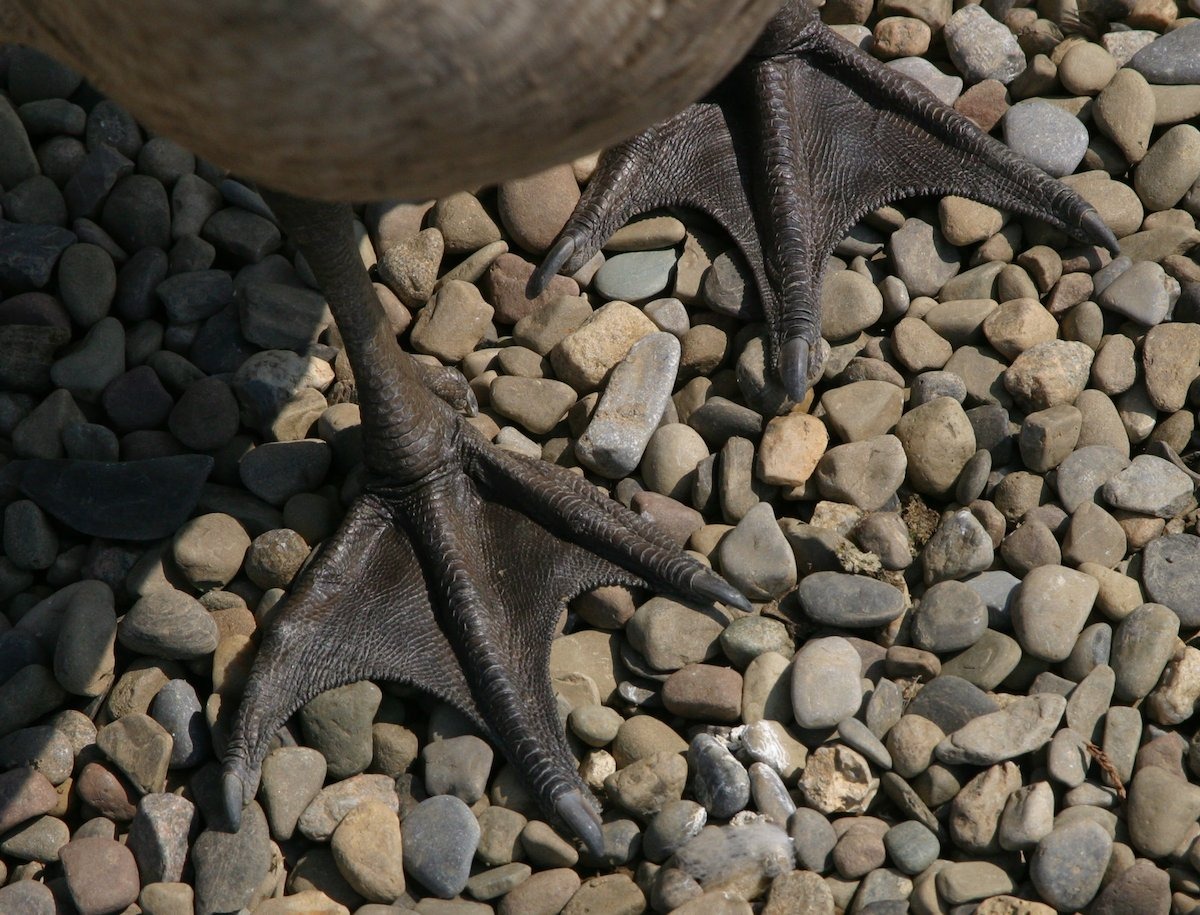
The Nēnē is a medium-sized goose, about 25 inches long with a wingspan of roughly three feet. It is easily recognized by its black face and crown, buff-colored cheeks, and strong barred patterns across its neck, which look almost like a necklace of grooves. The plumage blends beautifully into the volcanic landscapes of the islands, offering them natural camouflage.
Unlike other geese that are known for their loud honking, the Nēnē has a softer, more melodic call. These birds are primarily herbivores, feeding on native shrubs, grasses, and berries, particularly the fruit of the ‘ōhelo berry plant, which also holds significance in Hawaiian culture.
Nēnē are monogamous, and pairs often form strong, lifelong bonds. During the nesting season, which usually spans from October to March, females lay three to five eggs in ground nests hidden among vegetation. The goslings are able to walk and feed themselves within days of hatching, though they remain under the care and protection of their parents.
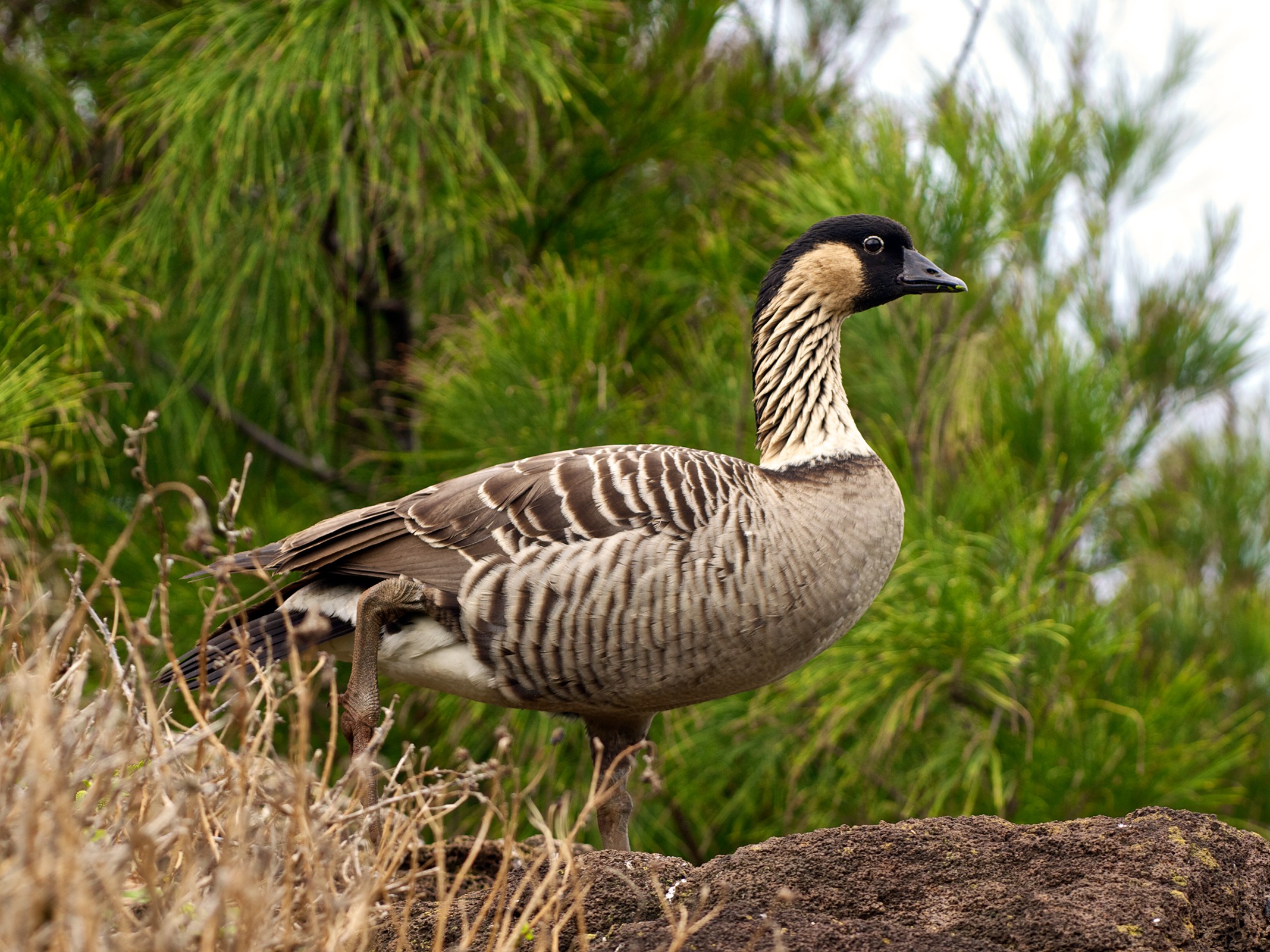
Despite its symbolic and ecological importance, the Nēnē came dangerously close to extinction in the 20th century. By the 1950s, fewer than 30 birds remained in the wild. Habitat destruction, hunting, and the introduction of predators such as mongoose, rats, and feral cats had decimated populations across the islands.
Recognizing the crisis, conservationists launched ambitious recovery programs. Captive breeding efforts, spearheaded in part by conservationists in Hawai‘i and abroad, played a pivotal role in saving the Nēnē. Birds raised in captivity were carefully reintroduced into protected areas across the islands, including national parks, wildlife refuges, and conservation lands.
Today, the Nēnē population has rebounded to over 3,000 individuals, with stable populations on Hawai‘i Island, Maui, Kaua‘i, and even reintroduction efforts on O‘ahu. While the bird is still listed as “threatened” under the Endangered Species Act, its recovery is often celebrated as one of the greatest conservation success stories in Hawai‘i.
For Native Hawaiians, the Nēnē has long held a place of cultural reverence. It is seen not only as a symbol of the islands but also as a living connection to the land (‘āina). Some traditions suggest the bird embodies qualities of endurance and adaptability—traits mirrored in the Hawaiian people themselves.
The bird’s name, “Nēnē,” is said to reflect its soft, gentle call. In Hawaiian culture, the naming of animals often connects to their spirit and behavior, highlighting a deep respect for the natural world.
When the Nēnē was officially designated the state bird of Hawai‘i in 1957, it became a powerful emblem of pride and identity. Its survival story is now tied not only to conservation biology but also to cultural renewal and education, reminding residents and visitors alike of the need to protect Hawai‘i’s fragile ecosystems.
If you’re visiting Hawai‘i and would like to see the Nēnē in its natural habitat, you’re in luck. National parks and reserves offer safe havens where these birds thrive. Some of the best places to encounter them include:
When observing these birds, it’s important to keep a respectful distance. Feeding Nēnē is strictly prohibited, as it can disrupt their natural diet and behavior. Responsible wildlife viewing ensures their continued survival and helps protect the delicate balance of Hawai‘i’s ecosystems.
The Nēnē’s story is more than just a tale of a bird brought back from the brink of extinction. It is a reminder of the interconnectedness of culture, conservation, and community. By saving the Nēnē, Hawai‘i has also safeguarded the integrity of its landscapes and preserved a vital link between people and place.
As Hawai‘i continues to face environmental challenges such as climate change, habitat loss, and invasive species, the survival of the Nēnē serves as both a beacon of hope and a call to action. Protecting this bird means protecting Hawai‘i itself.
1. What is the Nēnē, and why is it considered Hawaii’s state bird?
The Nēnē, or Hawaiian goose (Branta sandvicensis), is the official state bird of Hawai‘i. It’s beloved for its cultural importance, resilience, and unique adaptations to the islands. Found nowhere else in the world, the Nēnē symbolizes Hawaii’s commitment to protecting its native wildlife and preserving its natural heritage.
2. Is the Nēnē found anywhere outside of Hawaii?
No. The Nēnē is endemic to Hawai‘i, meaning it exists only in the Hawaiian Islands. It evolved from the Canada goose thousands of years ago and adapted to Hawaii’s volcanic landscapes, grasslands, and shrublands. Its story is a powerful reminder of how isolated island ecosystems create one-of-a-kind species.
3. What makes the Nēnē different from other geese?
The Nēnē has several unique characteristics:
4. What does the Nēnē look like and how does it behave?
Nēnē are medium-sized geese with black heads, buff-colored cheeks, and distinctive striped neck feathers. They blend seamlessly into volcanic landscapes. They’re also:
5. How close did the Nēnē come to extinction?
In the 1950s, the Nēnē population dropped to fewer than 30 birds, putting the species on the brink of extinction. Habitat loss, hunting, and invasive predators such as mongoose and feral cats nearly wiped them out.
Thanks to dedicated captive breeding programs and reintroduction efforts, population numbers now exceed 3,000 birds—one of Hawaii’s greatest conservation success stories.
6. Why is the Nēnē important in Hawaiian culture?
The Nēnē holds deep cultural significance for Native Hawaiians. Its name comes from its gentle vocalizations, and the bird is often associated with adaptability, endurance, and a strong connection to the ʻāina (land). When Hawai‘i designated the Nēnē as its state bird in 1957, it became a symbol of pride, identity, and the importance of caring for the land and its wildlife.
7. Where can I see the Nēnē in Hawaii today?
If you’re visiting Hawai‘i, you can spot Nēnē in several protected natural areas:
8. Why is it important not to feed Nēnē?
Feeding Nēnē may seem kind, but it harms them. Human food disrupts their natural diet, increases dependency, and can cause dangerous behavior near roads or humans. Feeding wildlife also violates federal and state regulations. The best way to help Nēnē is by viewing them responsibly and supporting conservation efforts.
9. How did conservationists help save the Nēnē?
Conservationists used a combination of:
10. Why does the Nēnē matter to Hawaii’s ecosystem?
As a native herbivore, the Nēnē plays a role in seed dispersal, vegetation control, and maintaining healthy grassland ecosystems. Its survival supports the overall balance of Hawaii’s fragile natural environment. Saving the Nēnē also helps preserve countless native plant species and habitats that depend on responsible stewardship.
11. What does the recovery of the Nēnē teach us about conservation?
The Nēnē’s comeback shows that community support, scientific research, and cultural awareness can make a real difference in restoring endangered species. It also highlights the importance of protecting Hawaii’s ecosystems from modern threats like invasive species and climate change.
12. Is the Nēnē friendly or safe to approach?
Nēnē are gentle birds but should never be approached or touched. They are protected by law, and human interaction can stress them or disrupt their behavior. Observe from a respectful distance, use your camera’s zoom, and allow them to go about their natural activities undisturbed.
If you would like to read and learn more about interesting things in Hawaii! Check out our blog page here on our website!
or